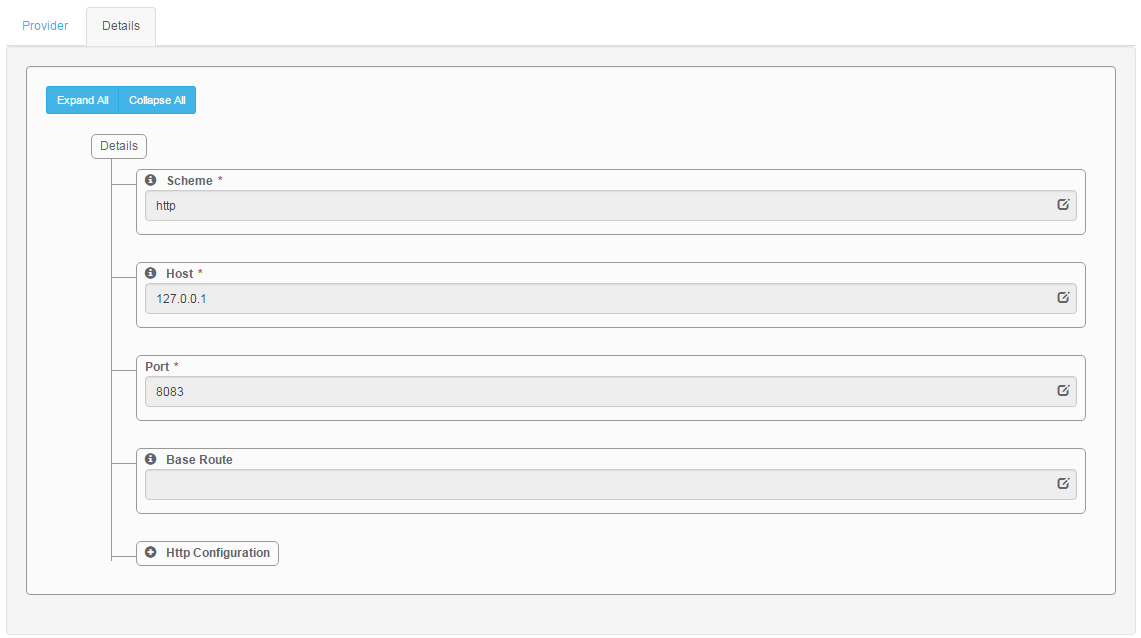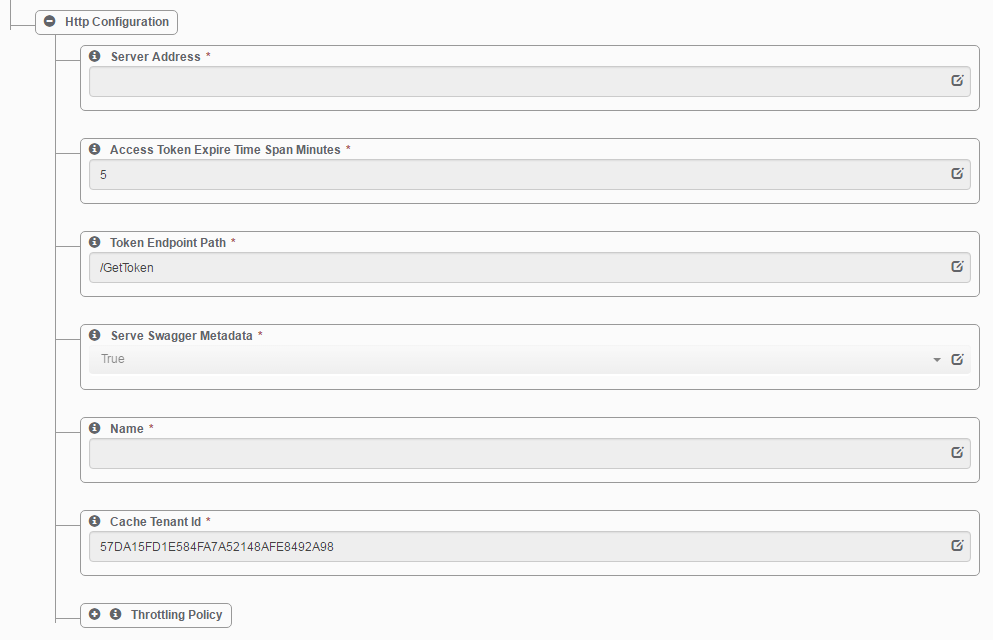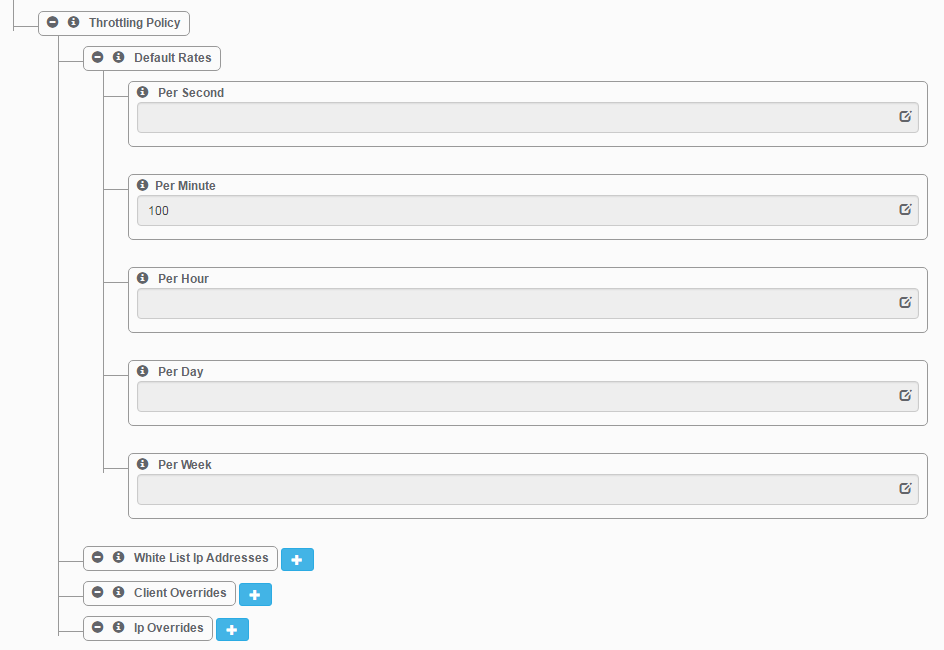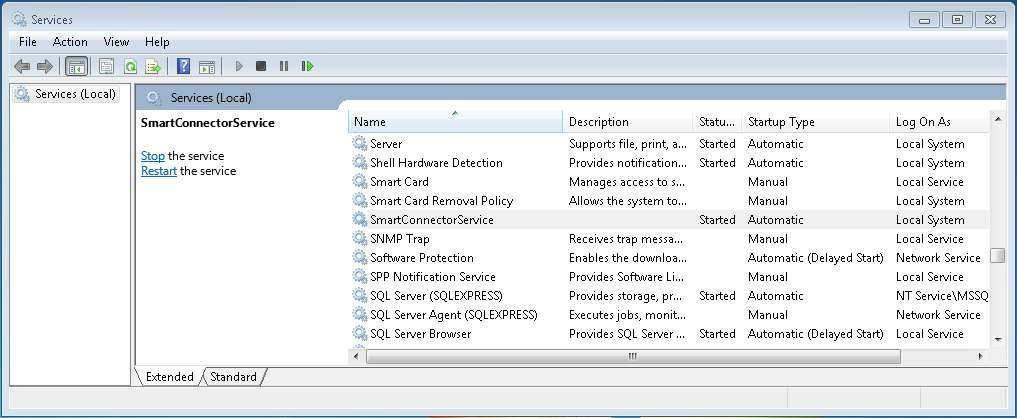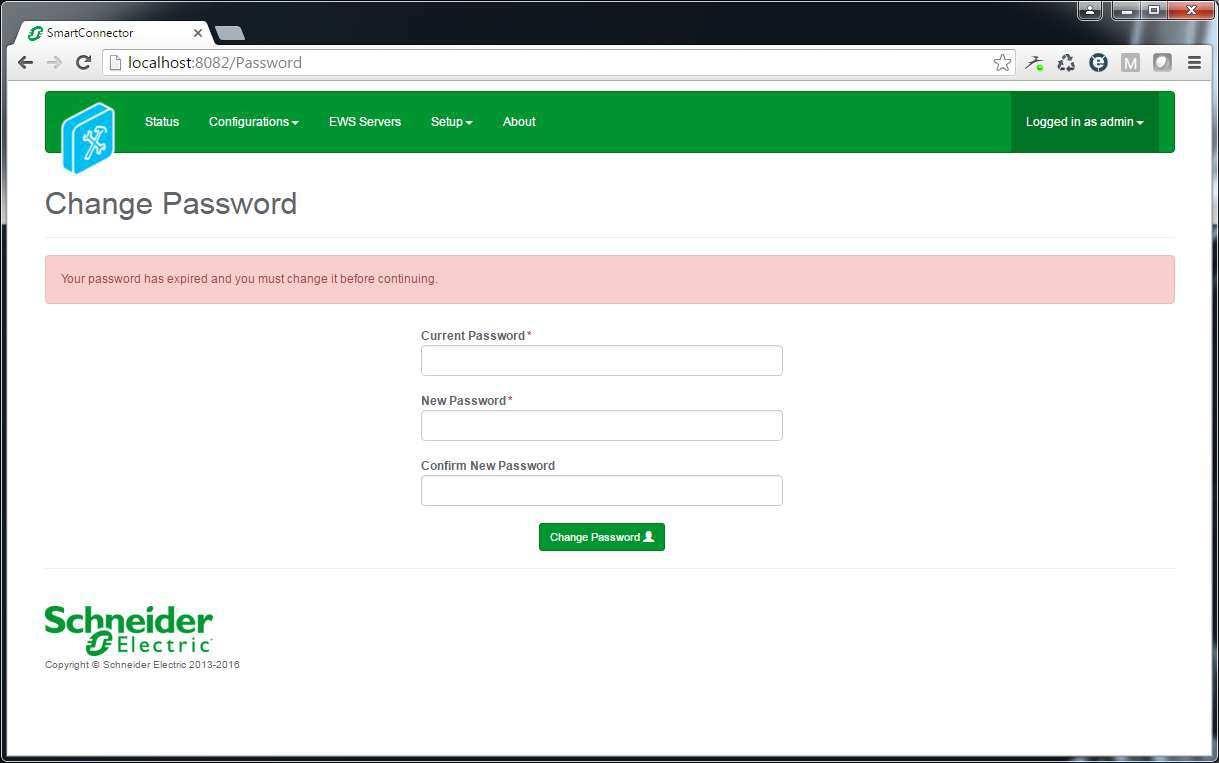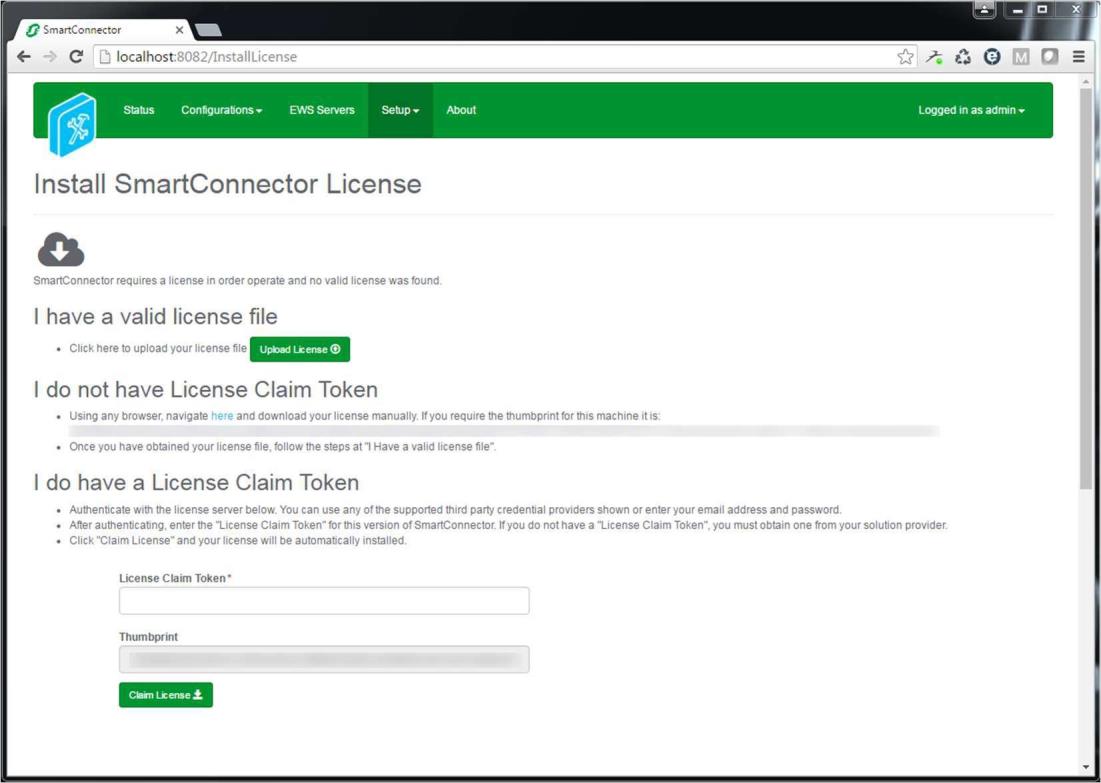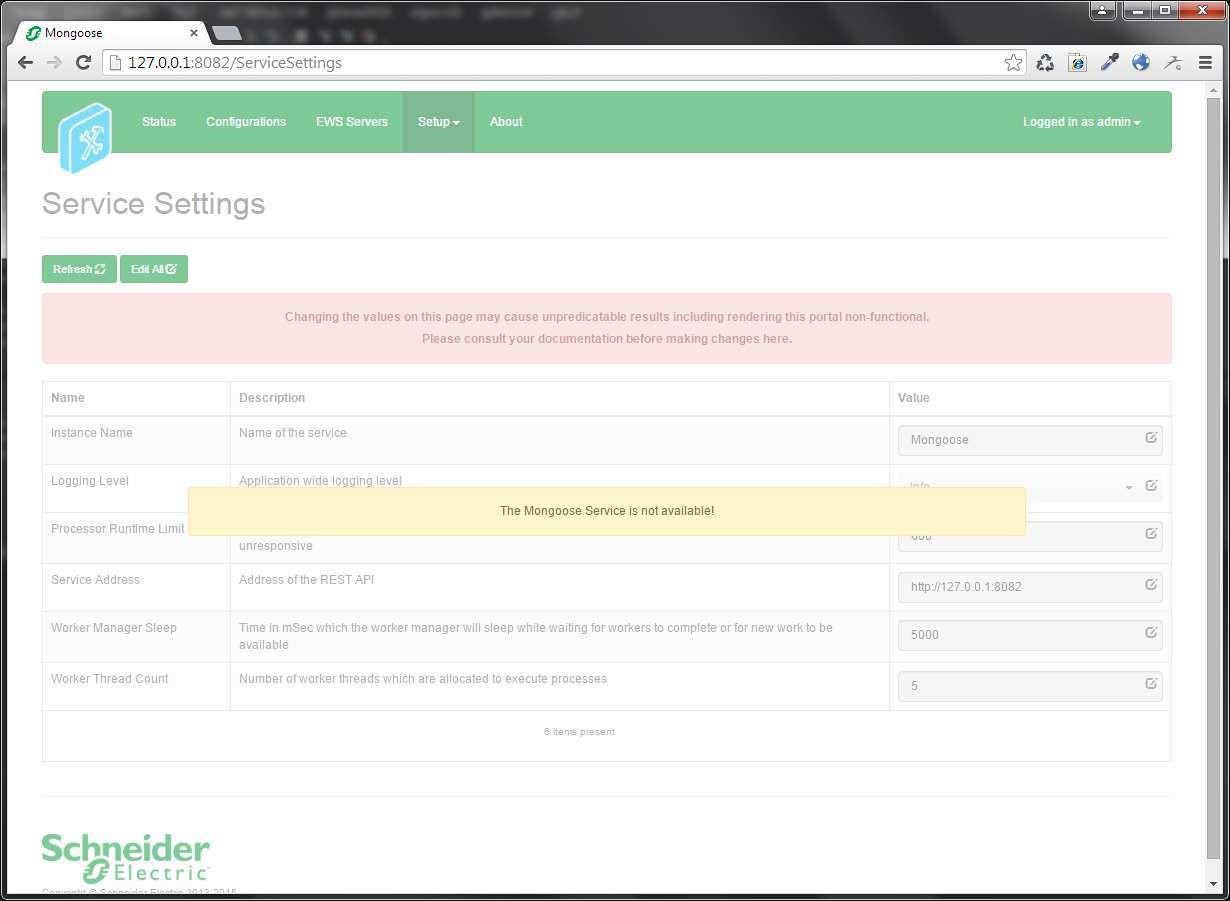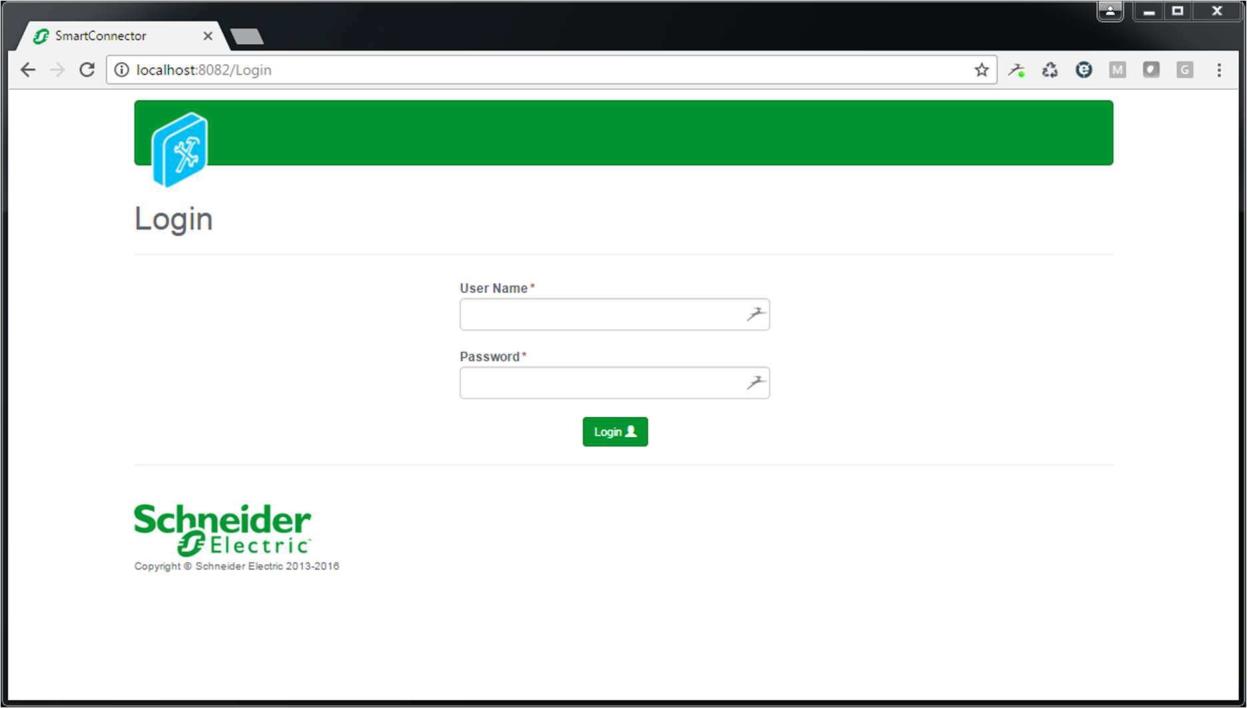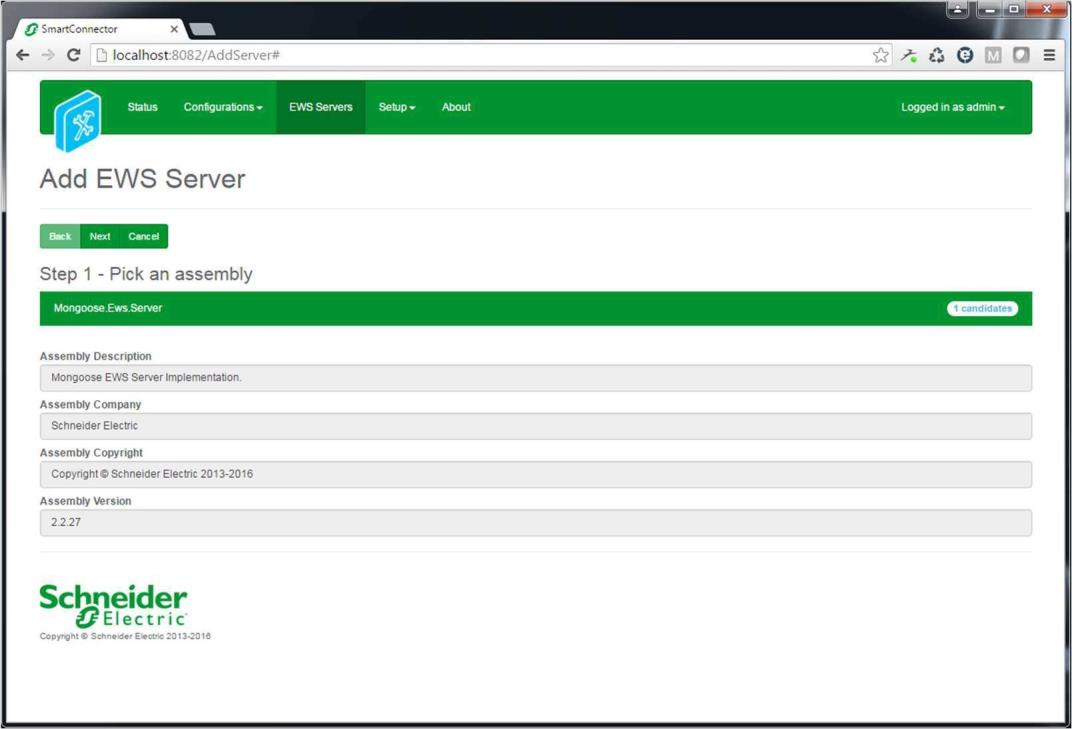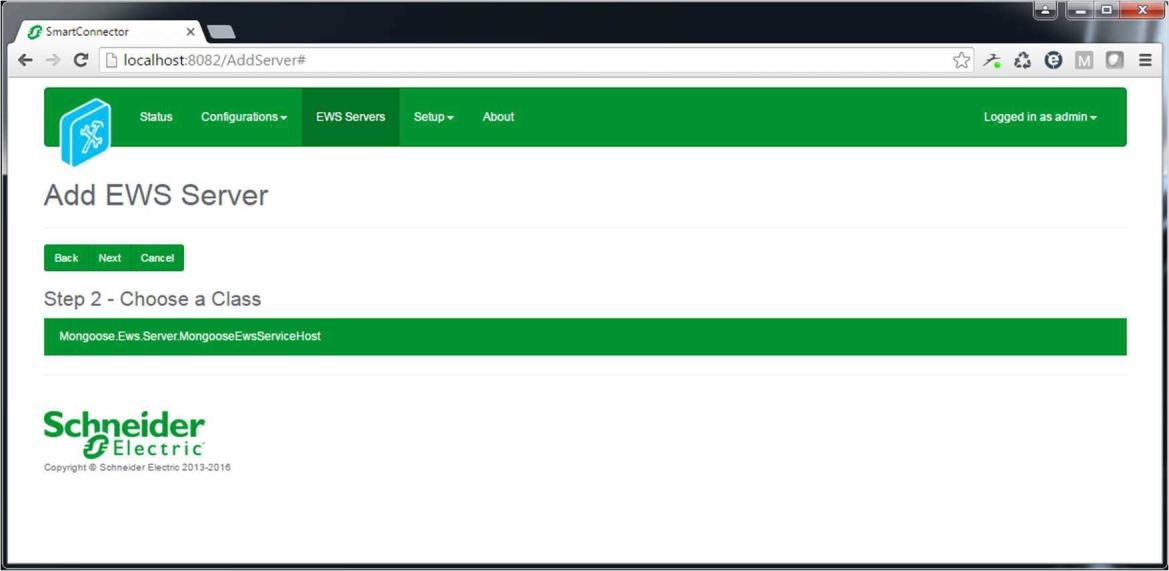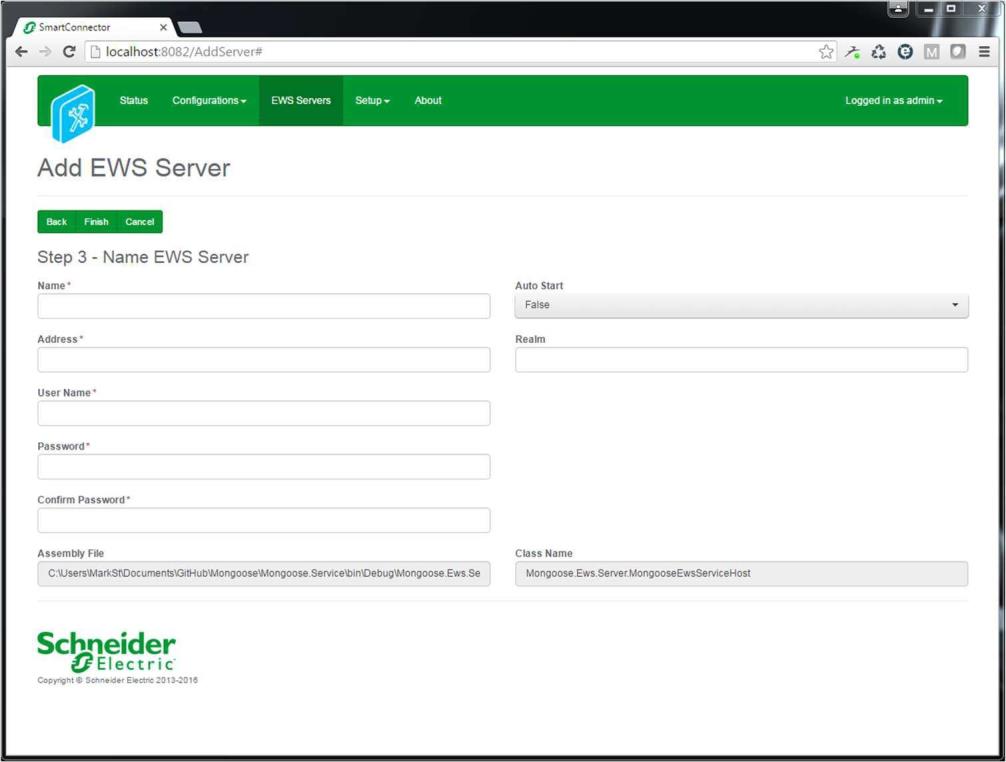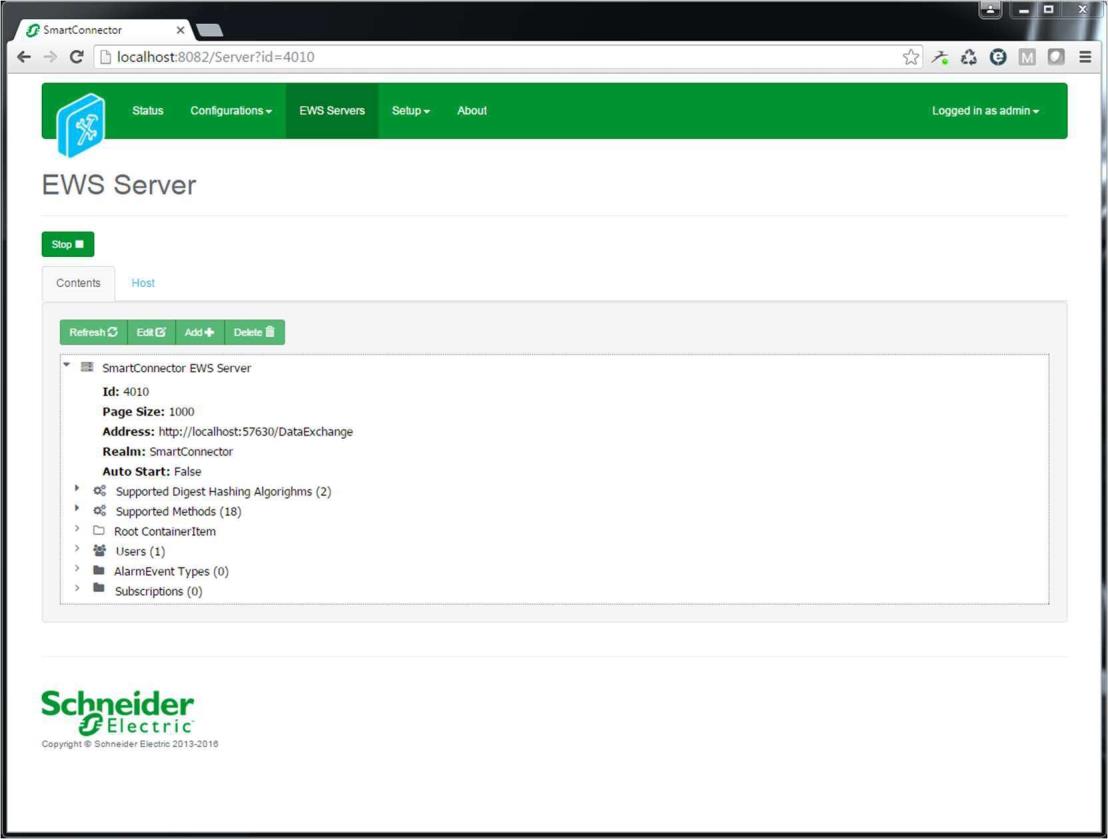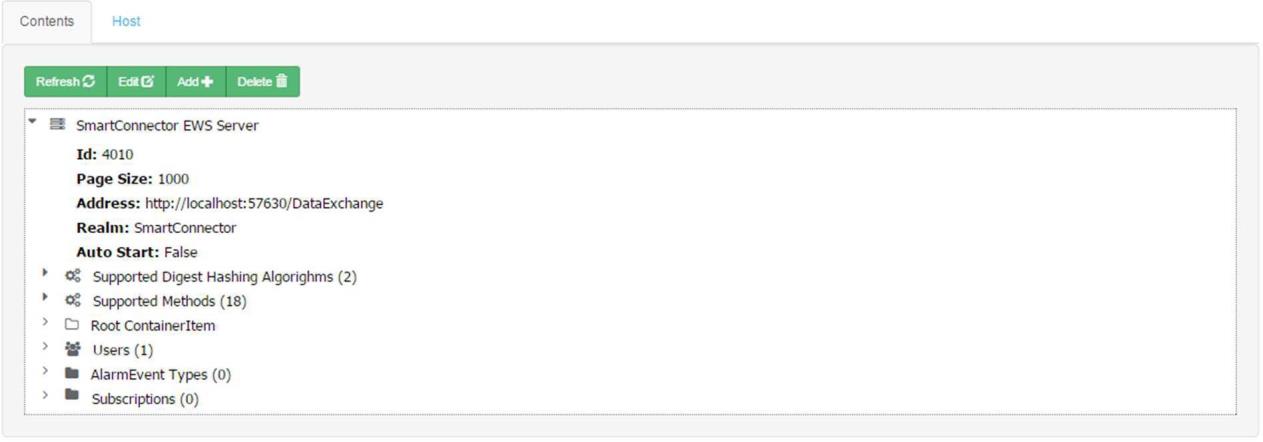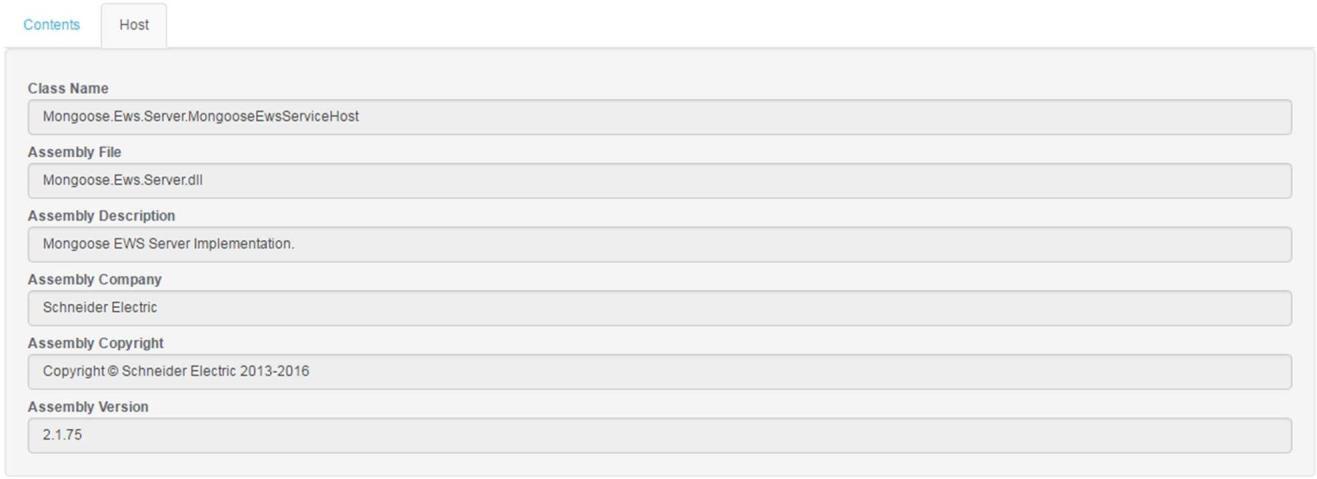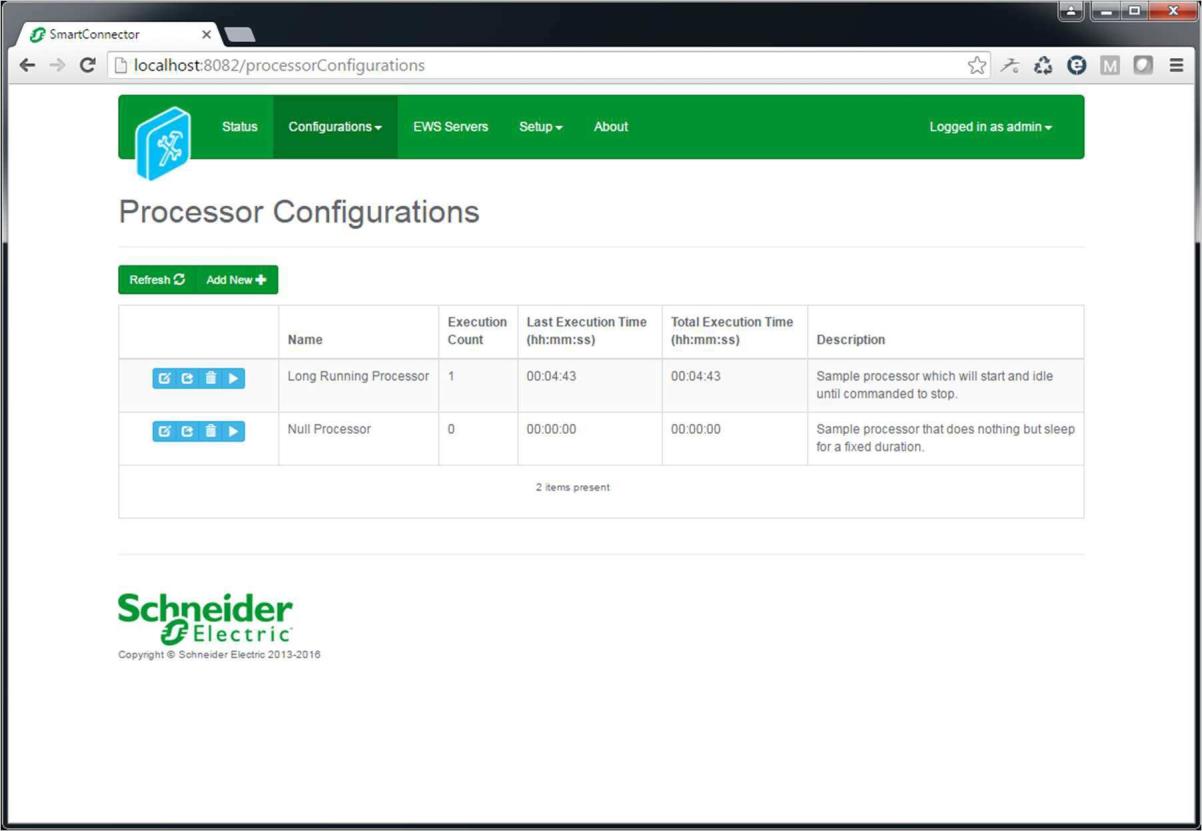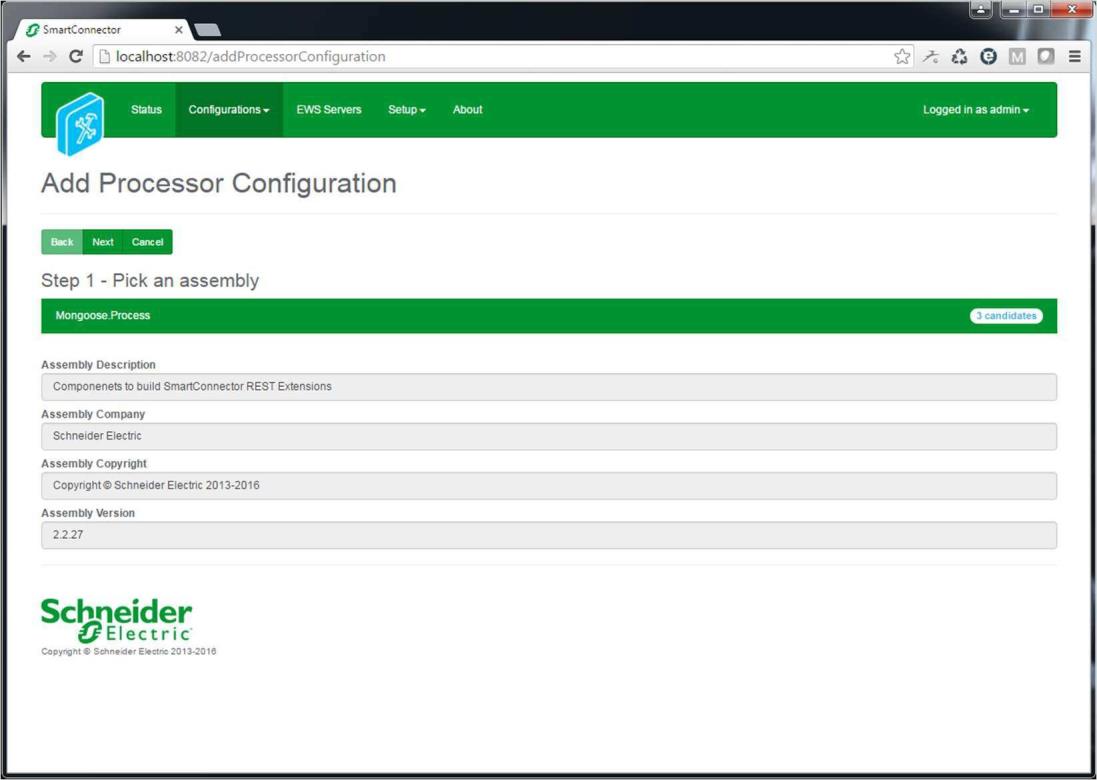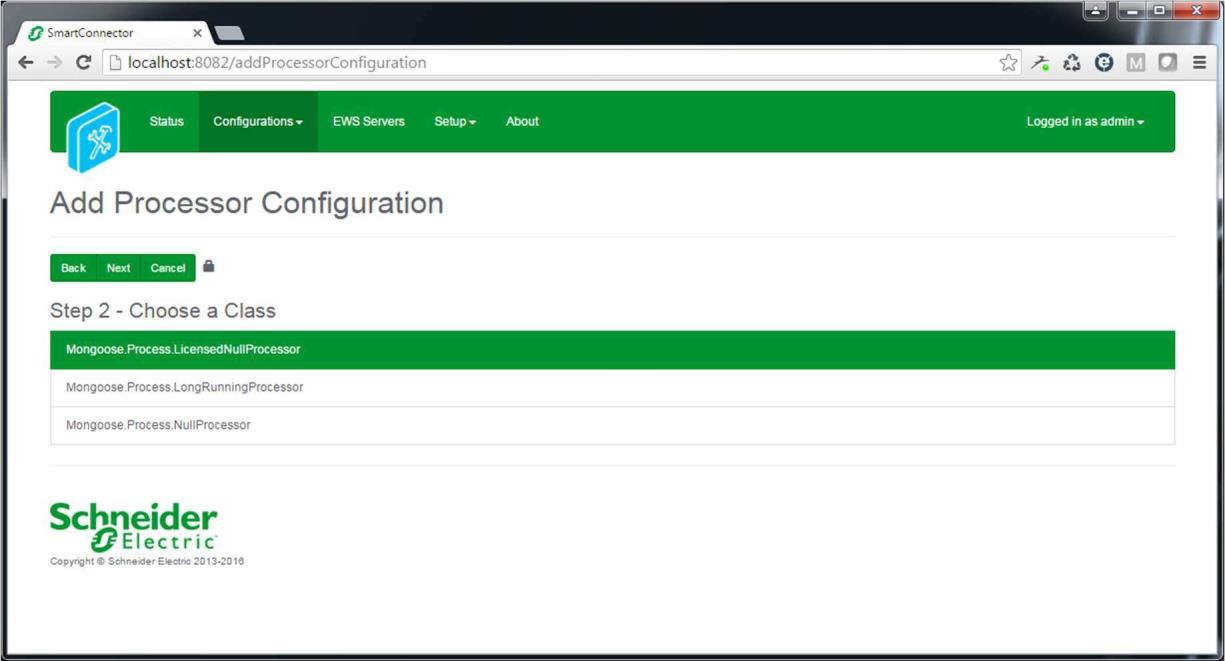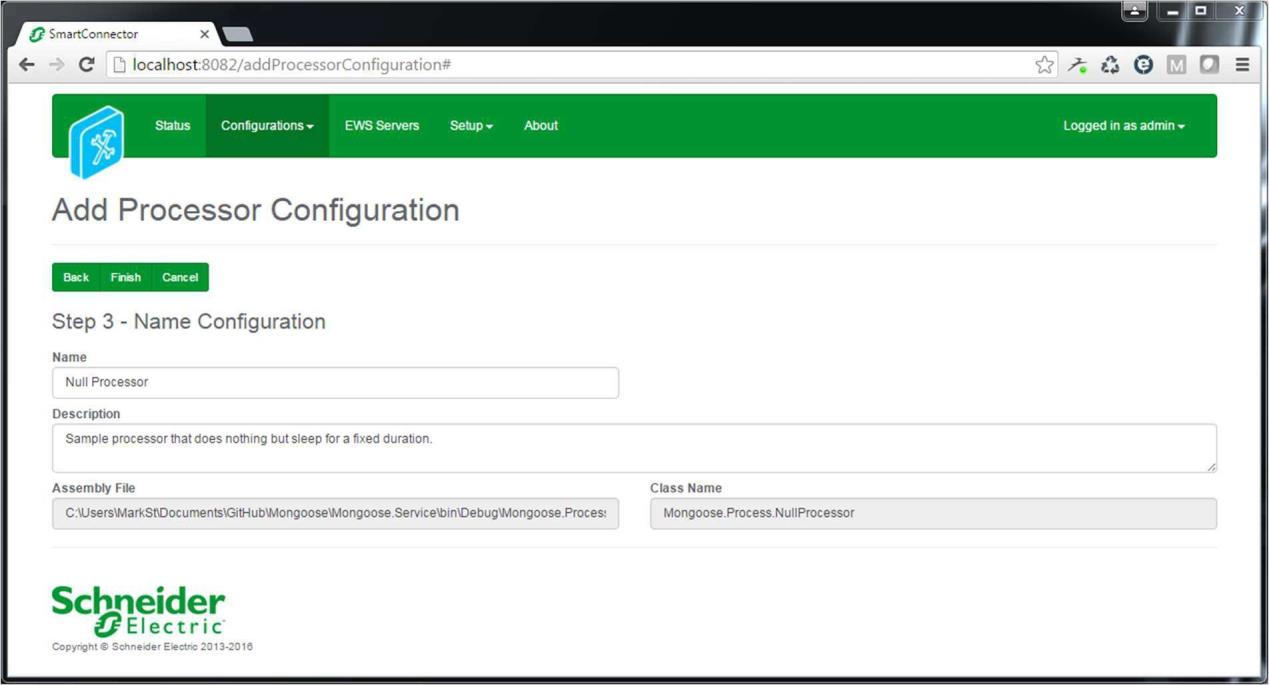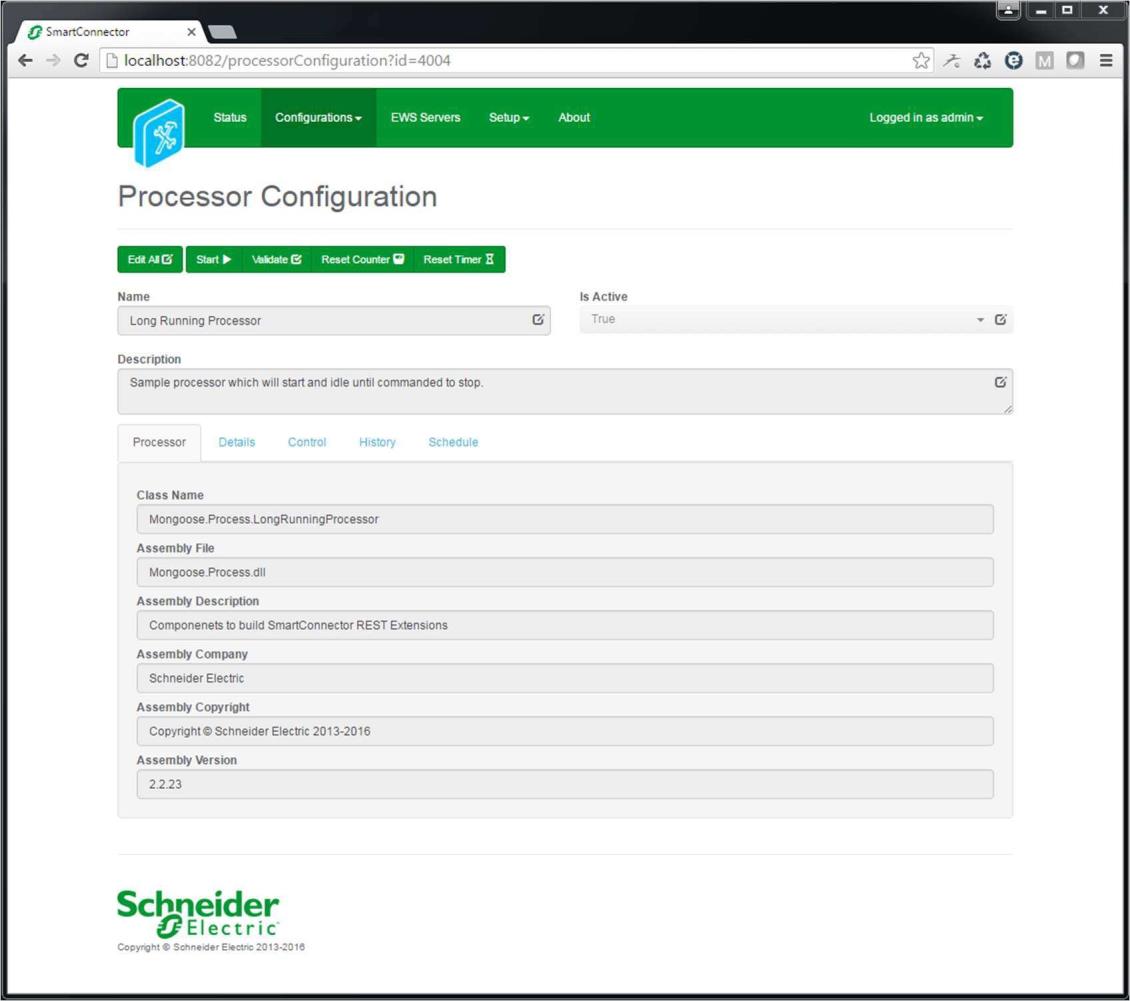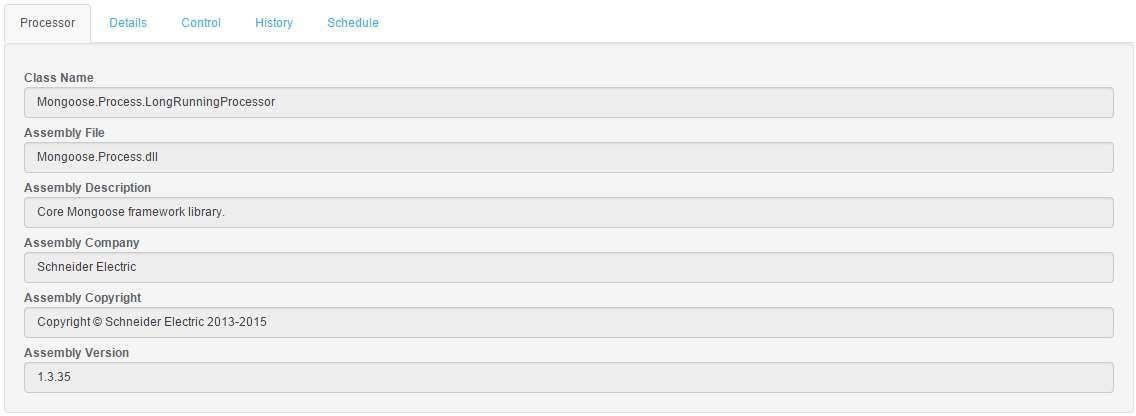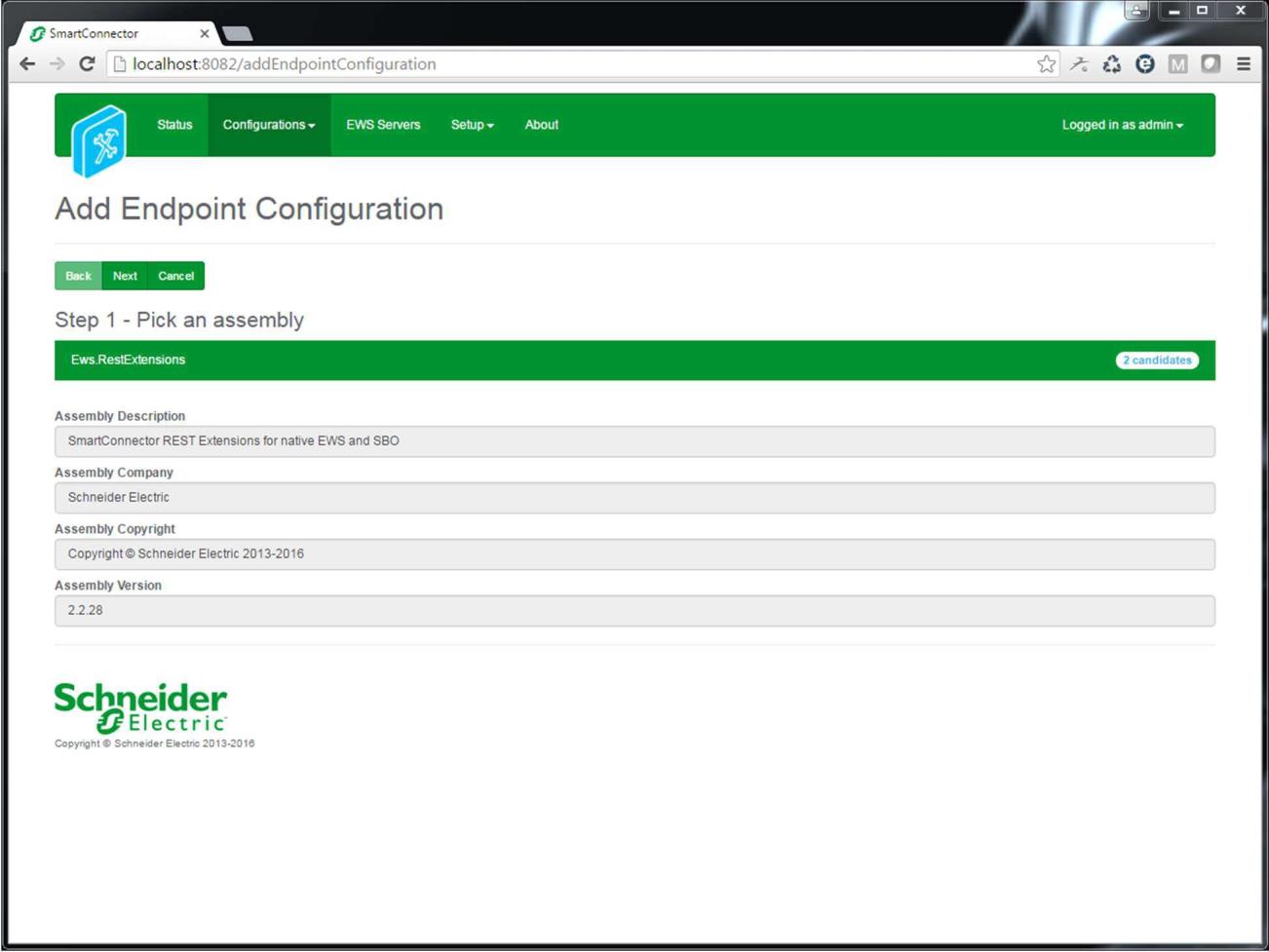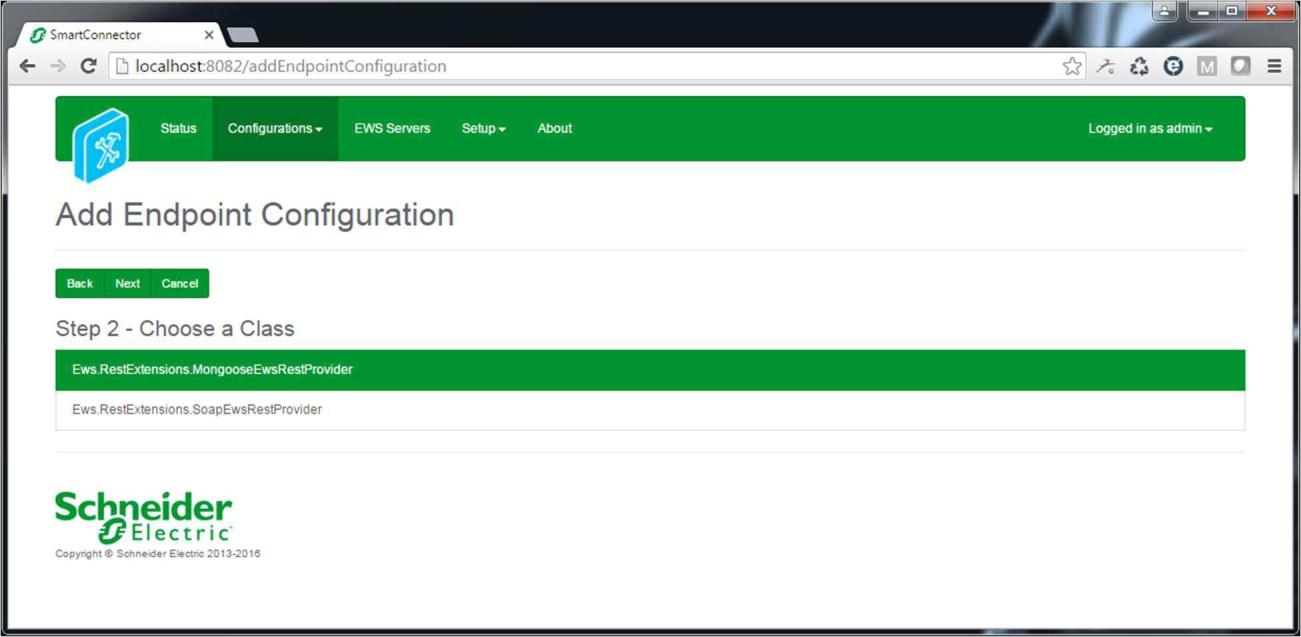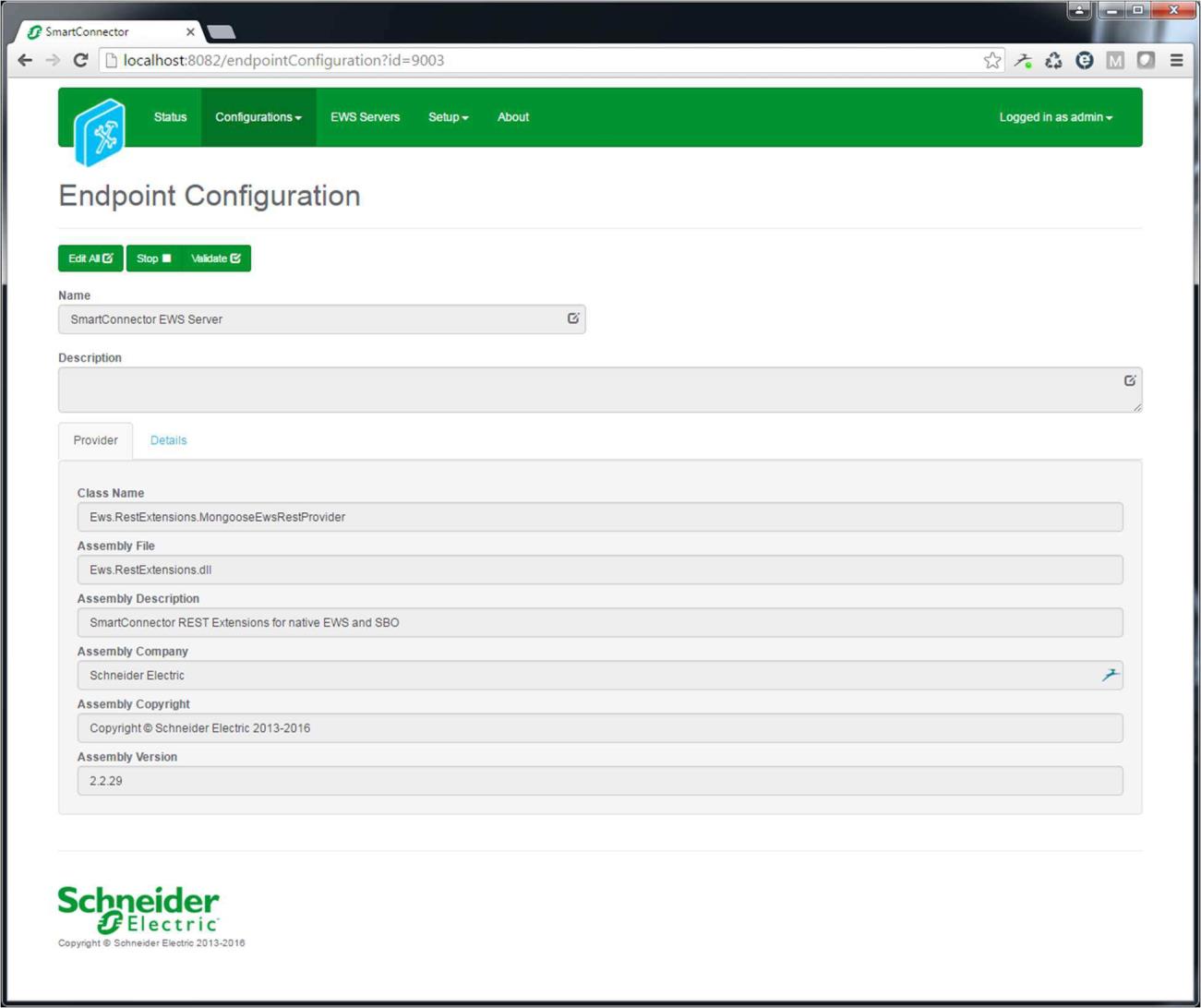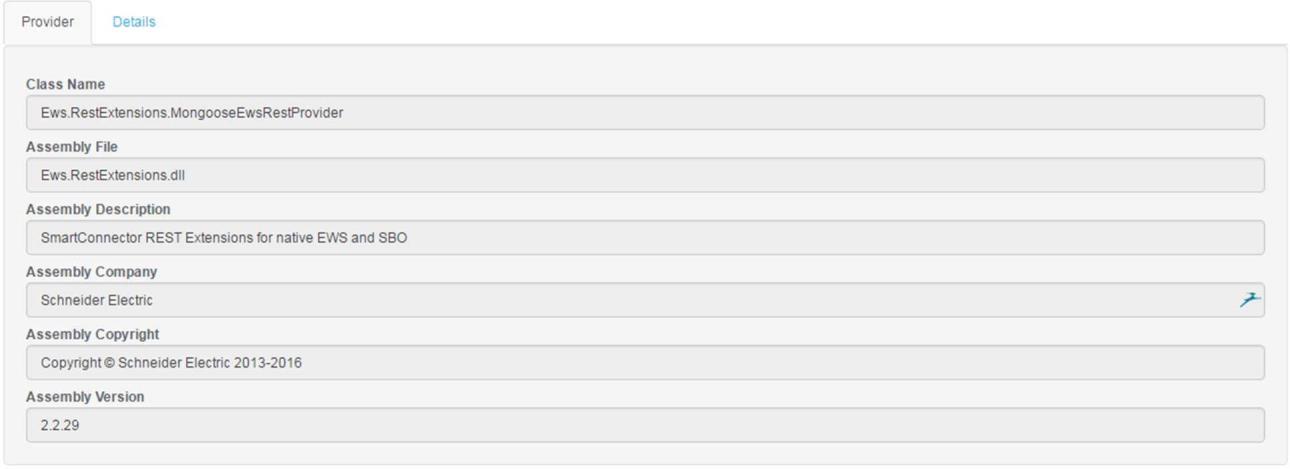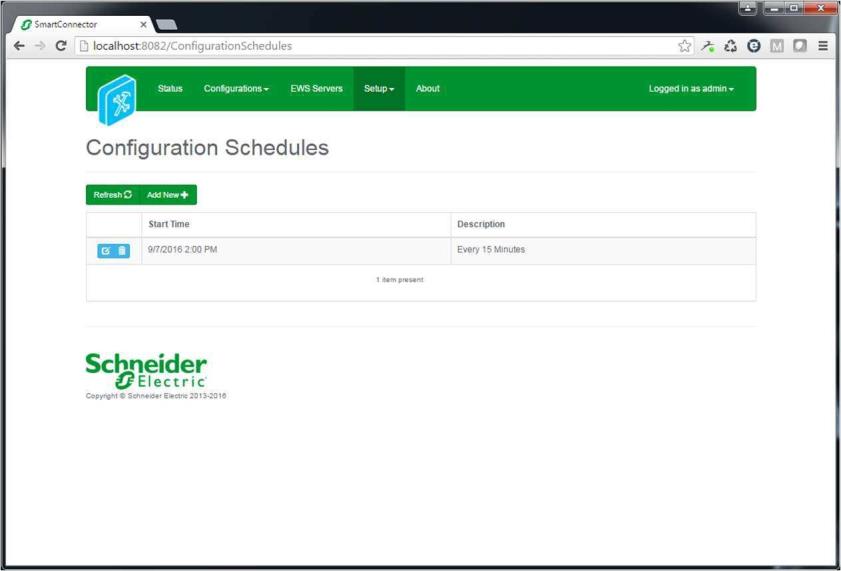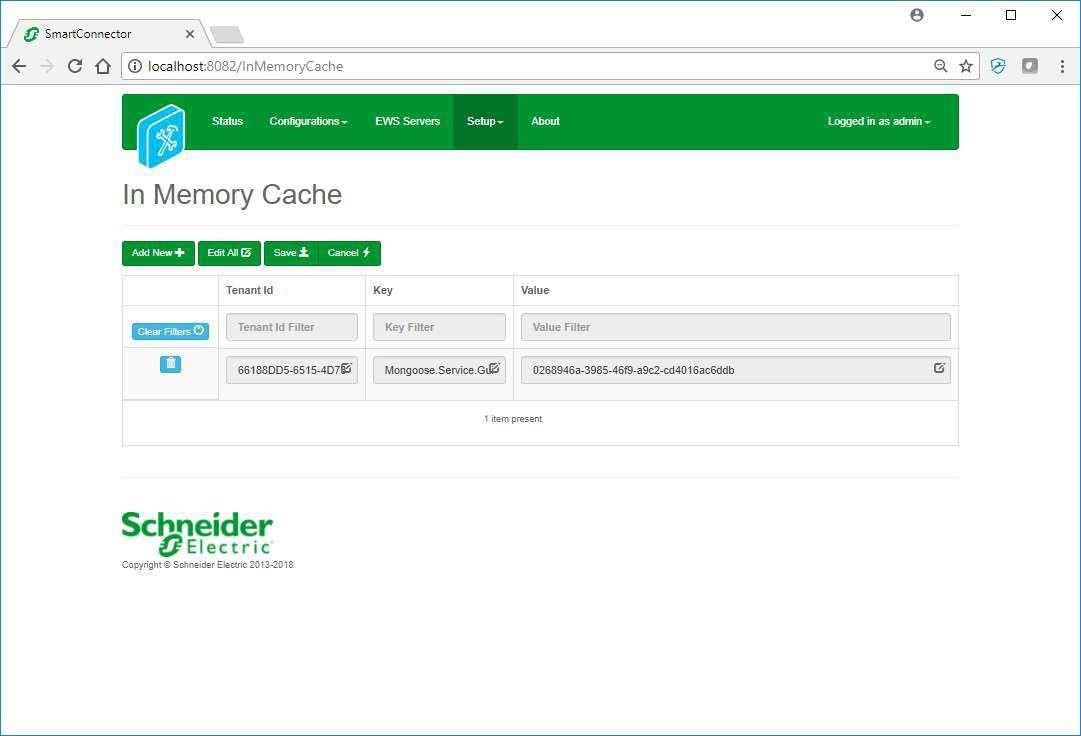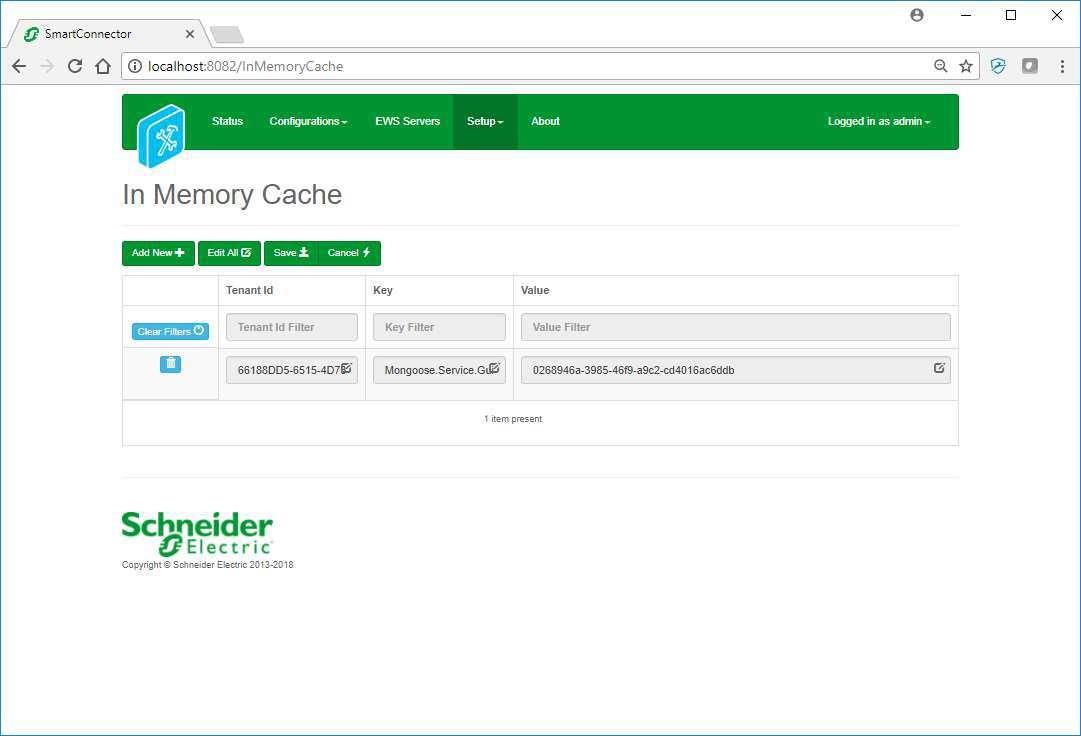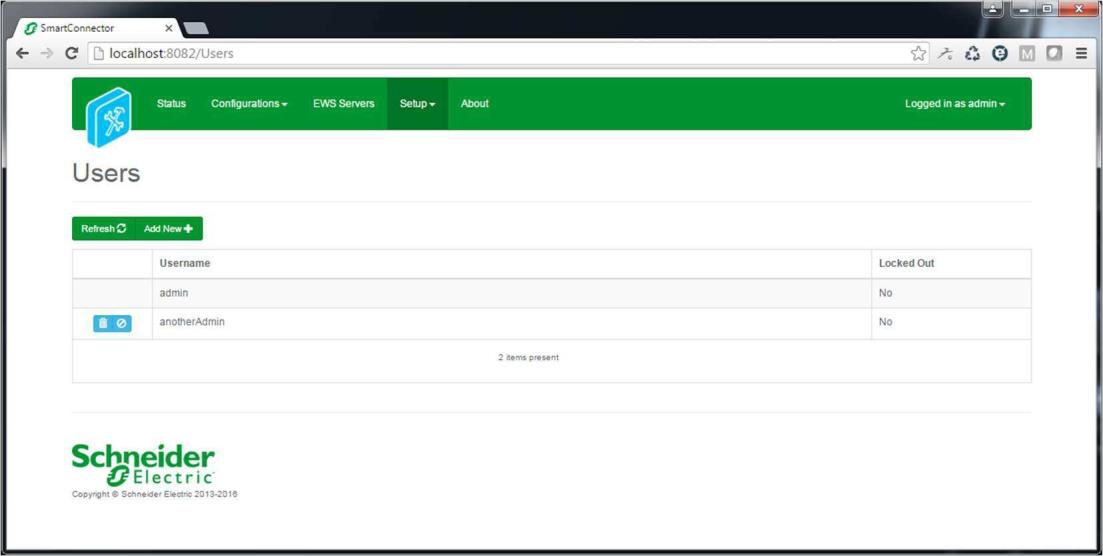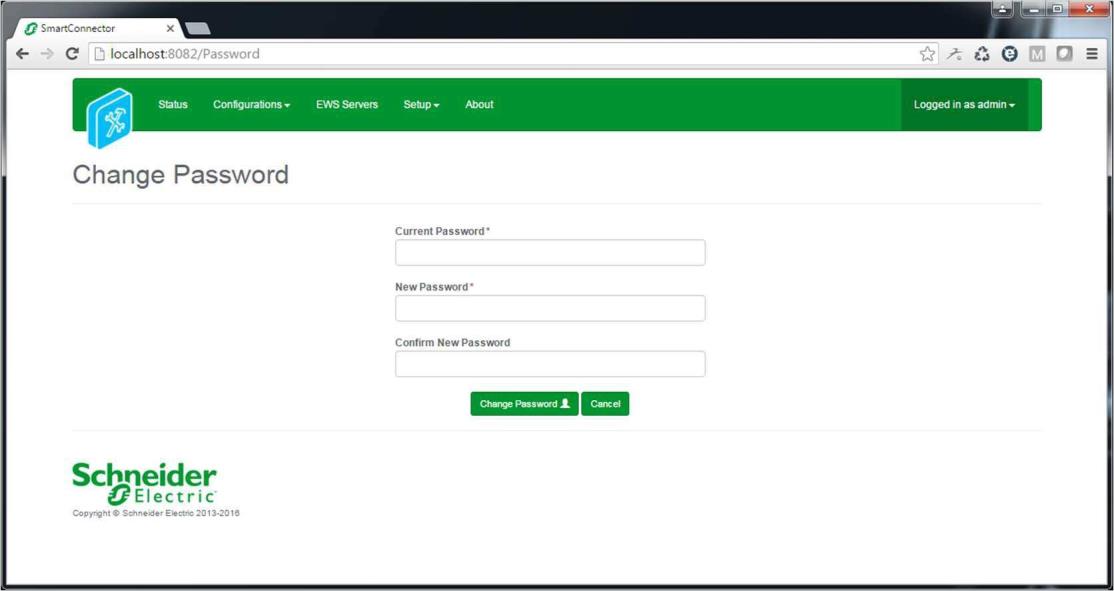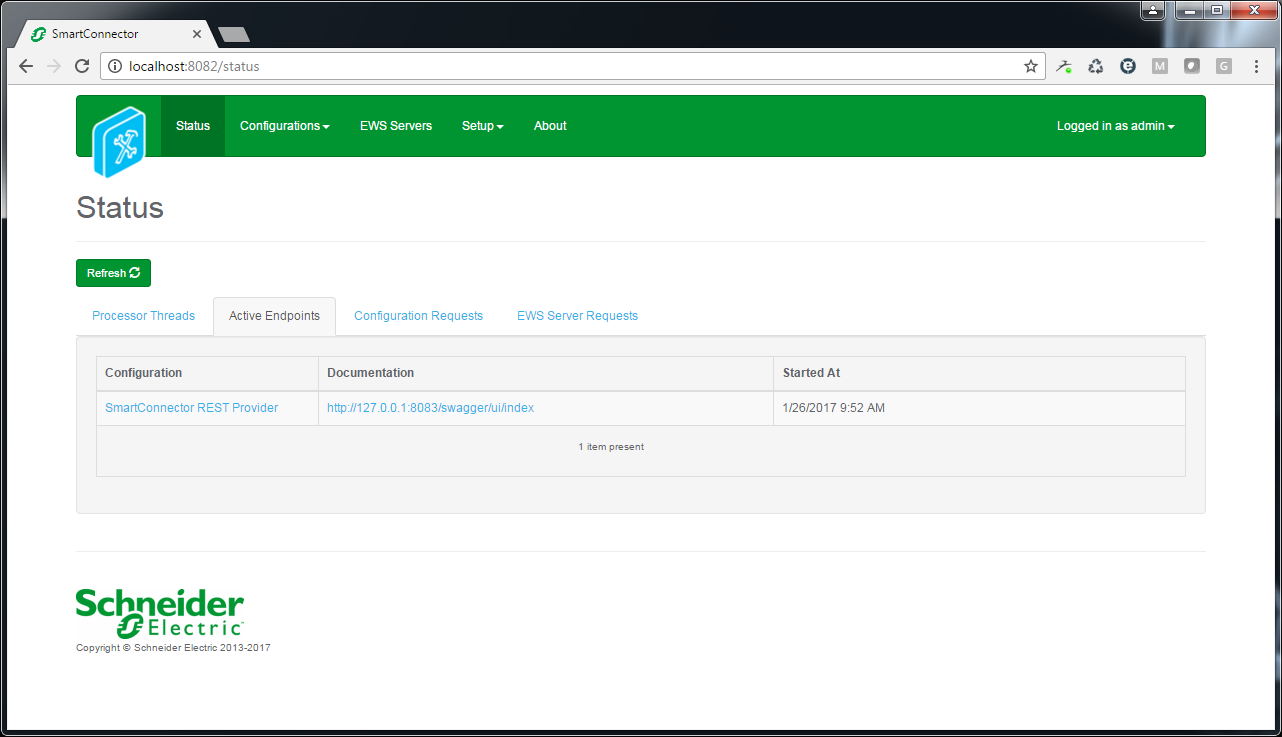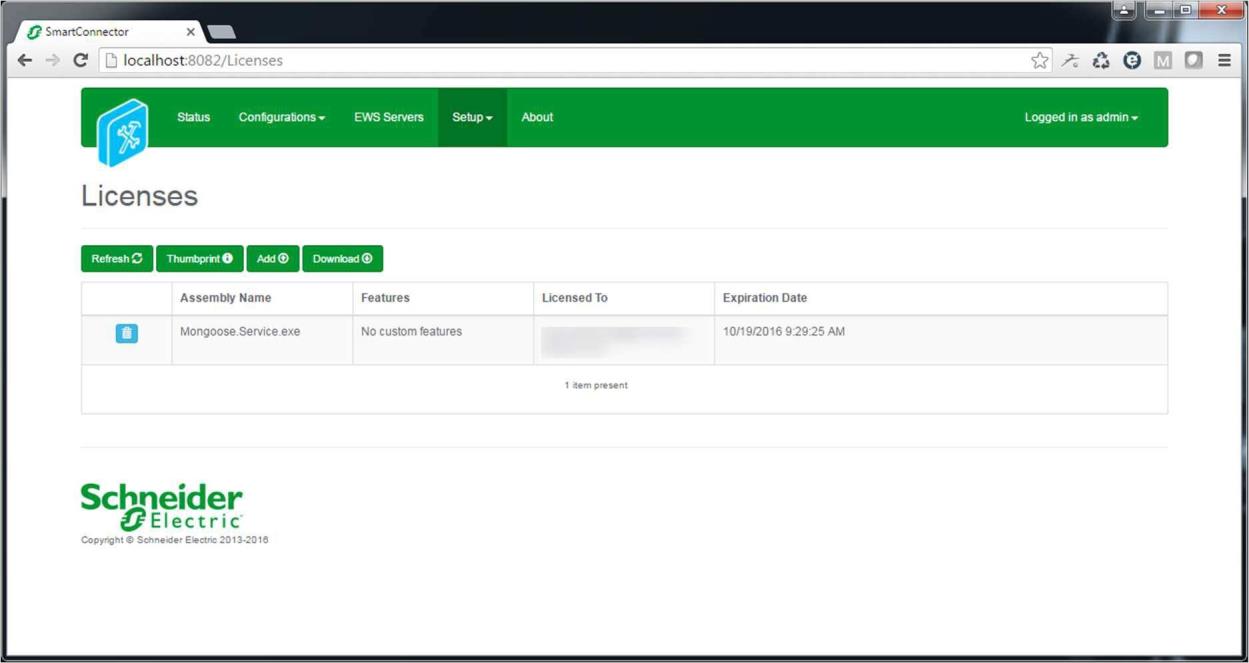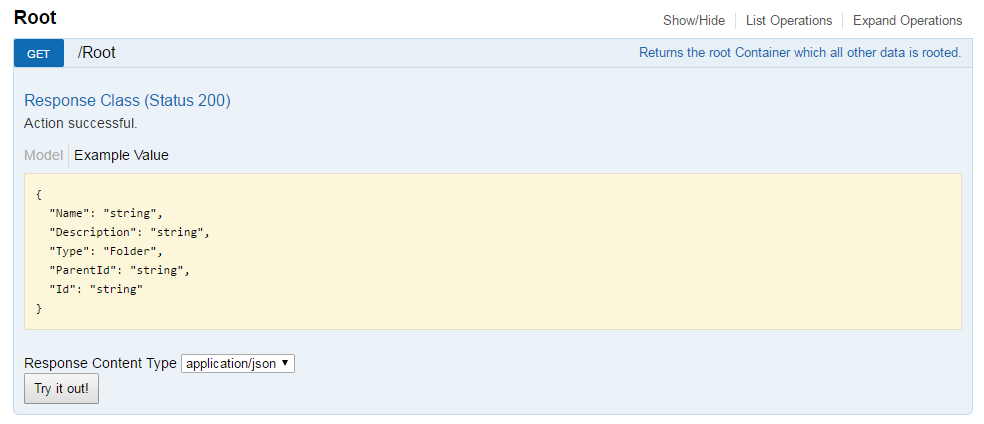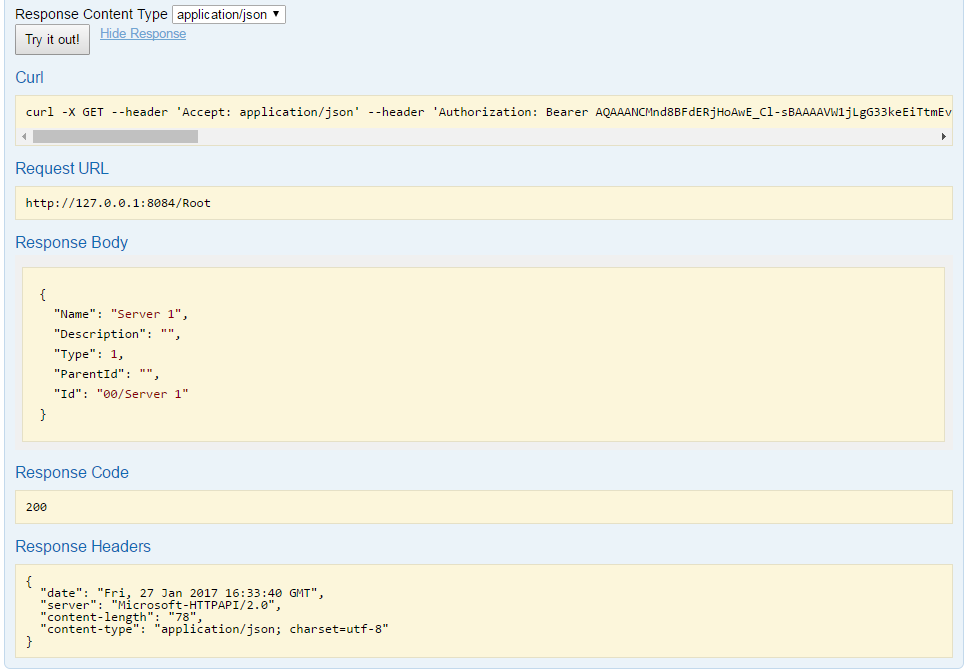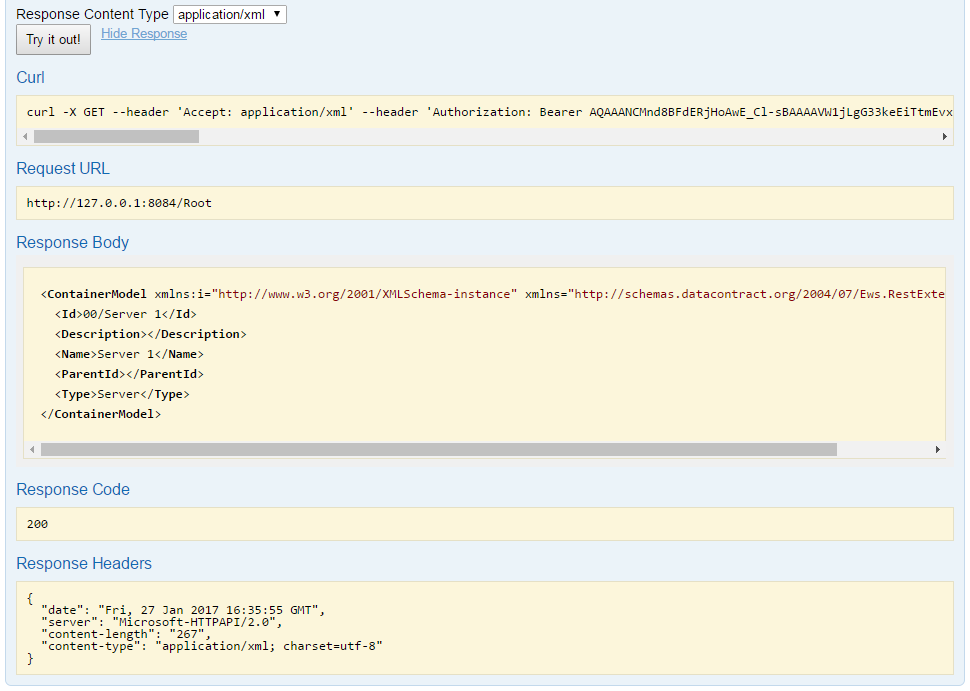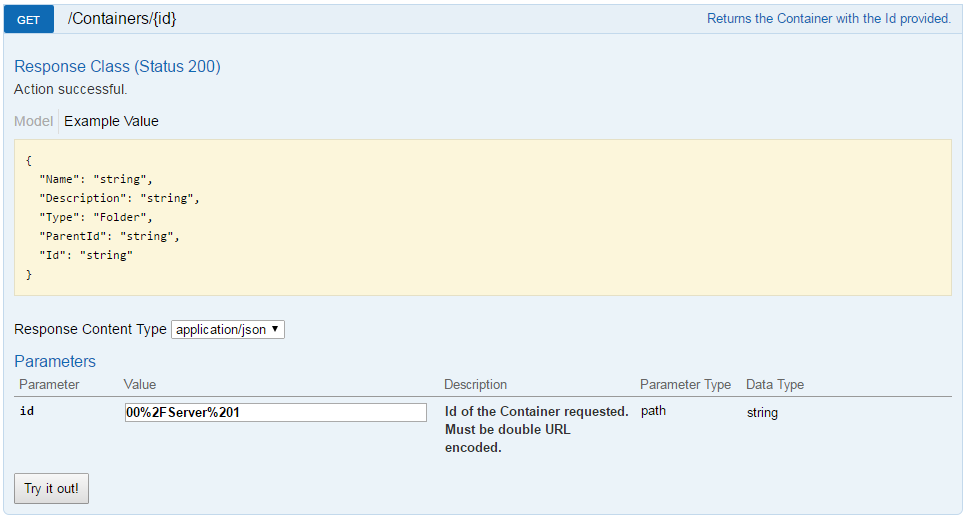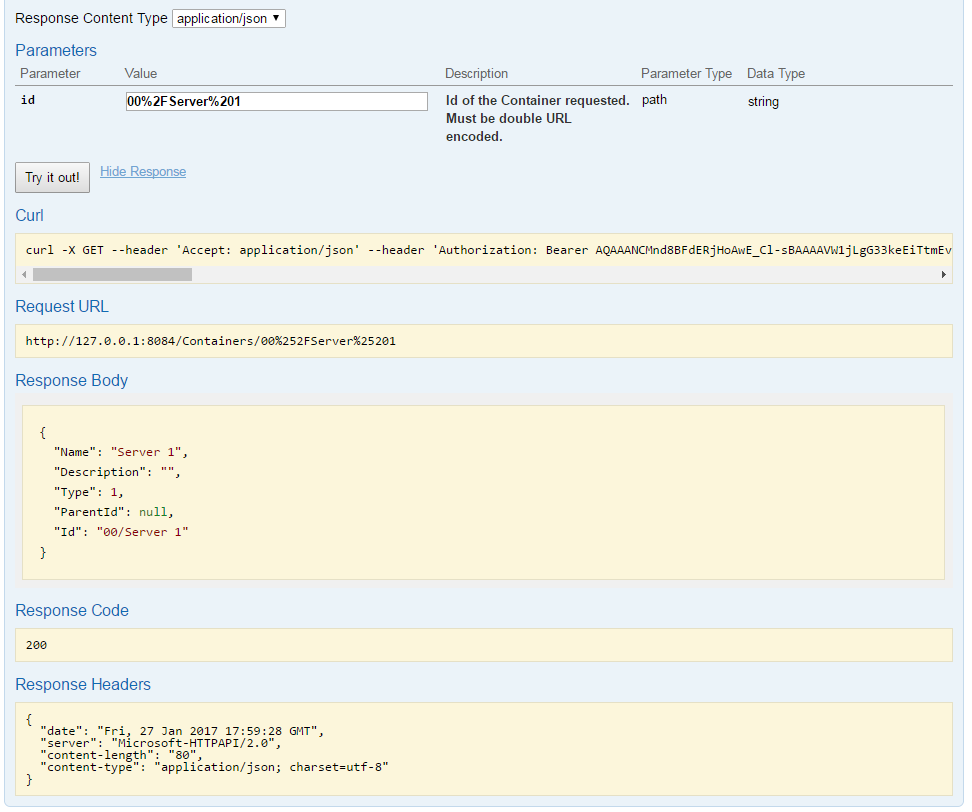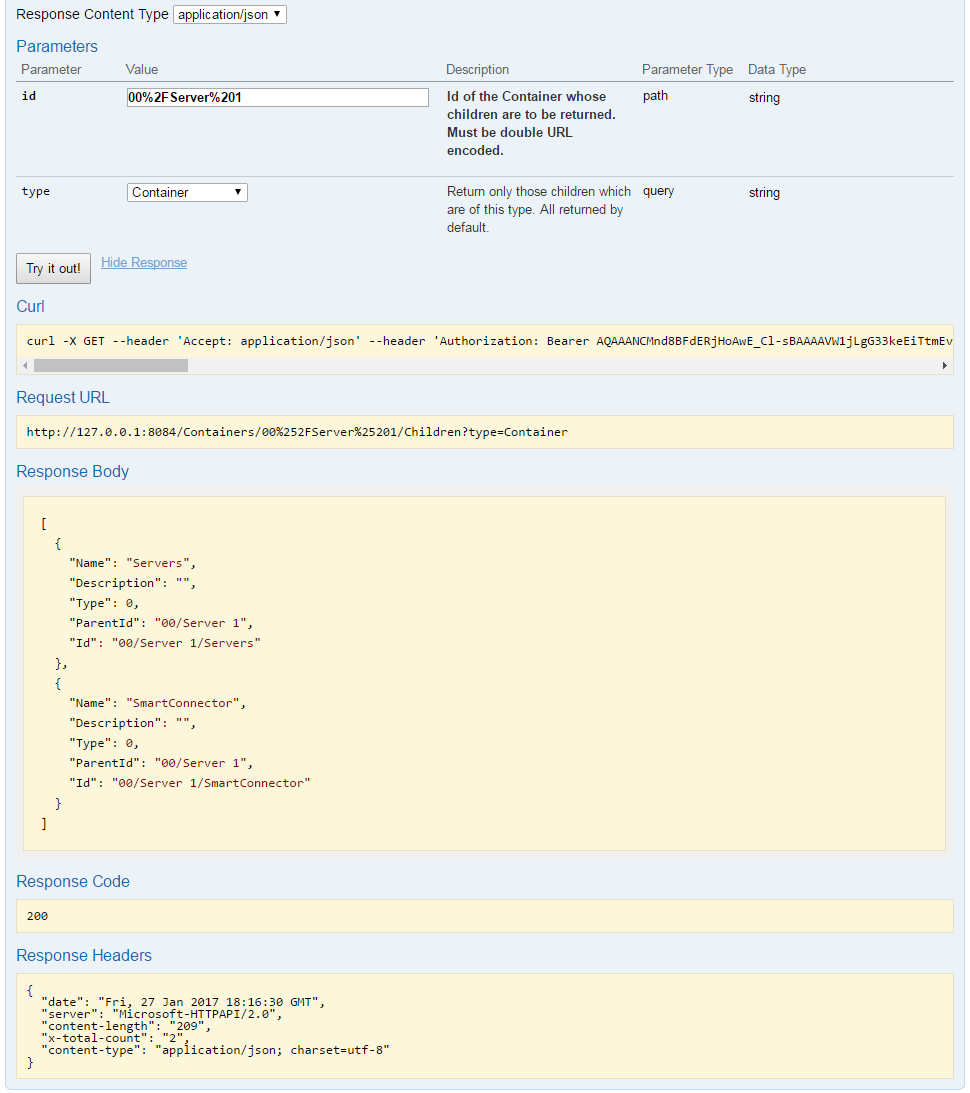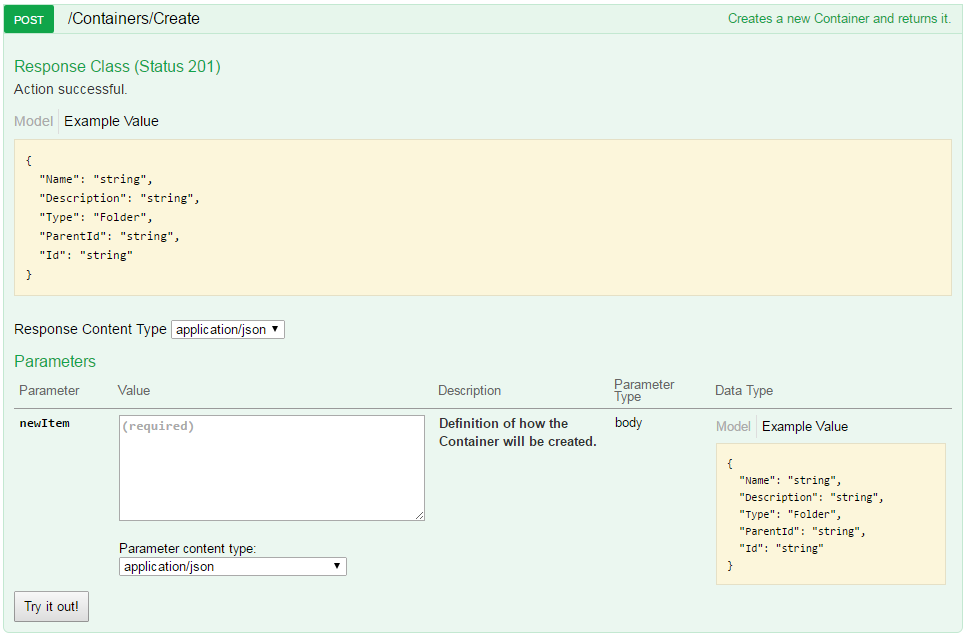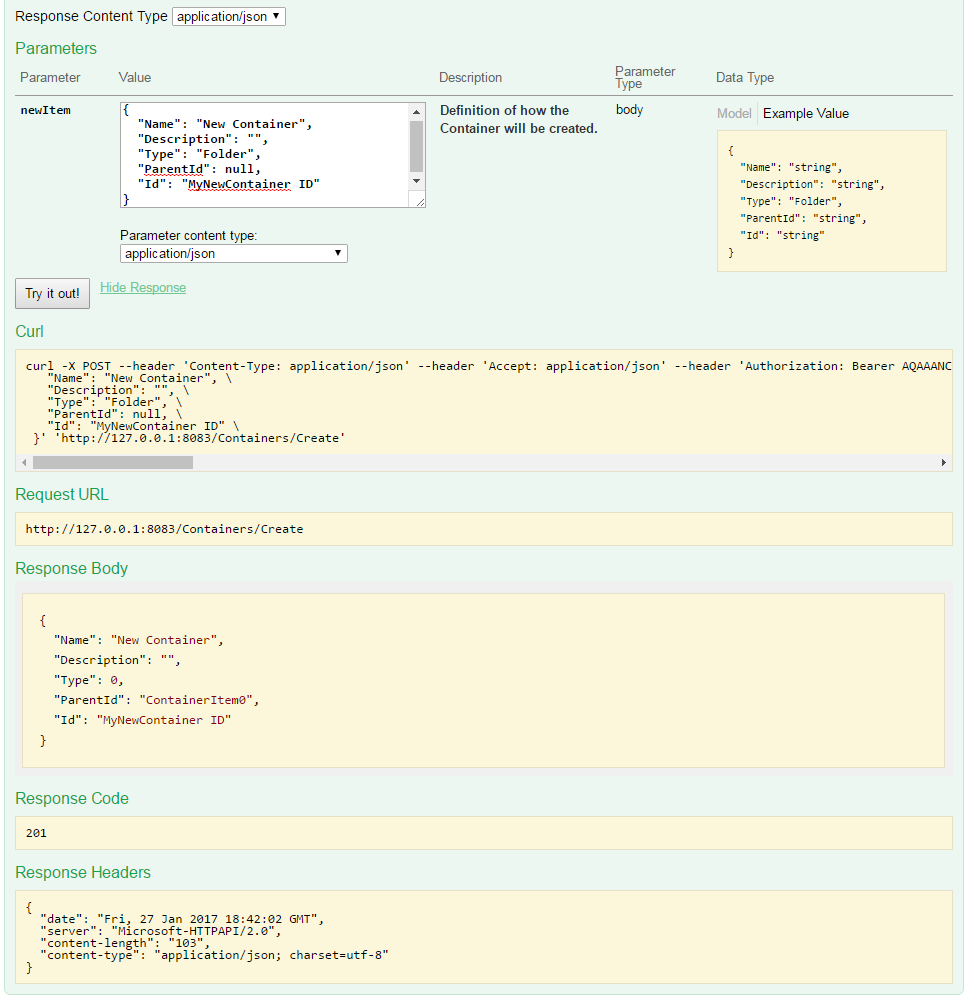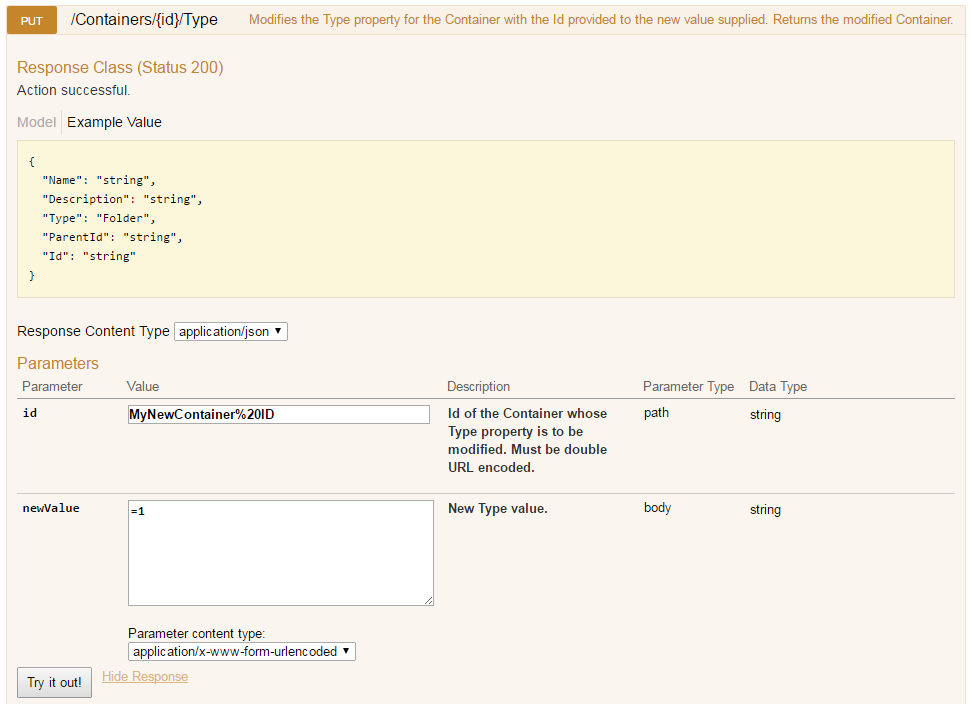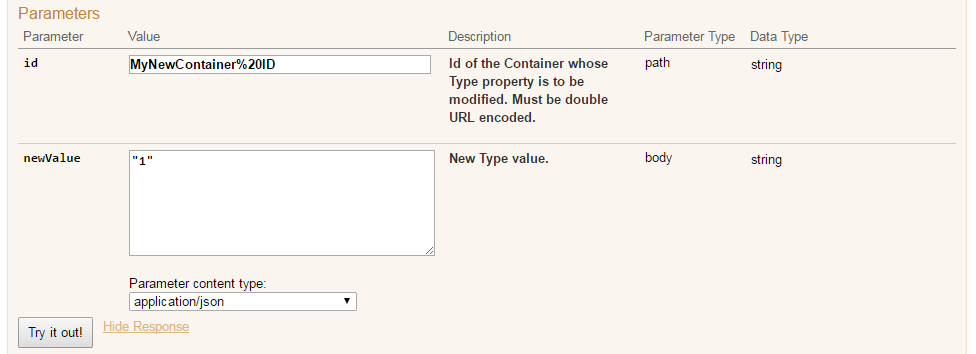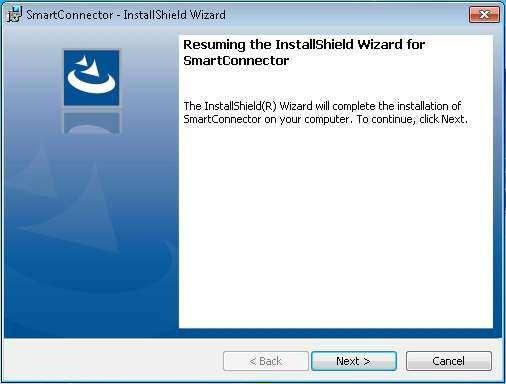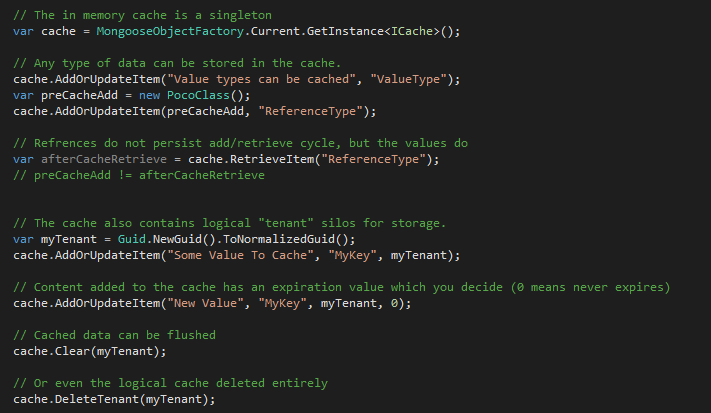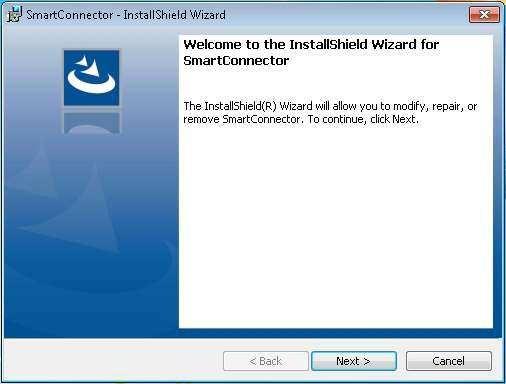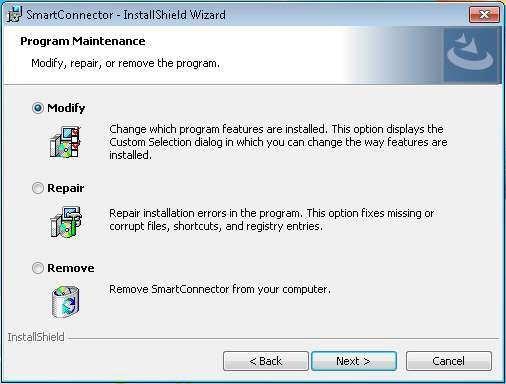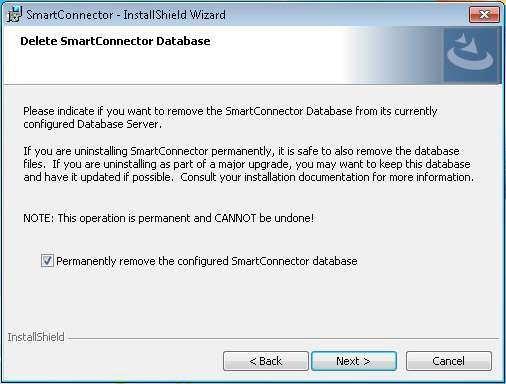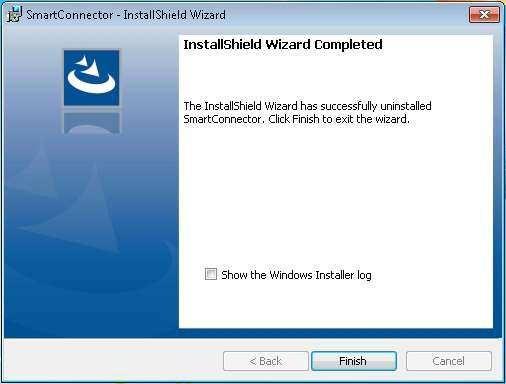Page 1
SmartConnector
Developers Guide
Buildings Labs
General
Page 2
SmartConnector Developers Guide
1
Support .................................................................................................................................................. 5
2
Revision History ..................................................................................................................................... 5
3
Overview ............................................................................................................................................... 6
3.1
Scope ............................................................................................................................................. 6
3.2
What is SmartConnector? ............................................................................................................. 6
3.2.1
Processor ............................................................................................................................... 7
3.2.2
Processor Configuration ........................................................................................................ 7
3.2.3
SmartConnector EWS Servers ............................................................................................... 7
3.2.4
REST Endpoints ...................................................................................................................... 8
3.2.5
Endpoint Configuration ......................................................................................................... 8
3.2.6
SmartConnector Portal .......................................................................................................... 8
3.2.7
Worker Manager and Workers .............................................................................................. 8
3.2.8
Extension ............................................................................................................................... 8
3.2.9
Persistent Data Store ............................................................................................................. 8
3.2.10
In-Memory Cache .................................................................................................................. 9
3.2.11
Logging .................................................................................................................................. 9
3.2.12
Licensing ................................................................................................................................ 9
4
Common Data Flows ............................................................................................................................ 10
4.1
Retrieving Data from an EWS Server ........................................................................................... 10
4.1.1
EwsClient ............................................................................................................................. 10
4.1.2
AlarmItemReader ................................................................................................................ 10
4.1.3
ValueItemReader ................................................................................................................. 10
4.1.4
HistoryItemReader............................................................................................................... 10
4.1.5
SubscriptionReader.............................................................................................................. 10
4.2
Providing Data to an EWS Client .................................................................................................. 10
4.2.1
Asynchronous Data Management ....................................................................................... 11
4.2.2
Synchronous Data Management ......................................................................................... 11
4.2.3
Hybrid Data Management ................................................................................................... 11
4.3
Providing Data to a Third Party ................................................................................................... 12
4.3.1
Active Third Party ................................................................................................................ 12
Document : Revision Revision date Page TDS-M-DEVGUIDE-US.BU.N.EN.12.2017.2.30.CC 7 01/14/2025 Page 1 of 86 General
Page 3
SmartConnector Developers Guide
4.3.2
Passive Third Party............................................................................................................... 12
5
Develop an Extension .......................................................................................................................... 13
5.1
Problem Statement ..................................................................................................................... 13
5.2
The Design ................................................................................................................................... 13
5.2.1
SetupProcessor .................................................................................................................... 14
5.2.2
UpdateProcessor ................................................................................................................. 14
5.2.3
Custom EWS Server ............................................................................................................. 14
15
5.3
SmartConnector GitHub NuGet packages……………………………………………………………………………………
5.4
Creating Extension Assembly ...................................................................................................... 16
5.4.1
Create an Empty Solution .................................................................................................... 16
5.4.2
Add Class Library Project ..................................................................................................... 16
5.4.3
Annotate Your Extension Assembly..................................................................................... 17
5.5
Processor Development (Setup Processor) ................................................................................. 17
5.5.1
Add Processor Class ............................................................................................................. 17
5.5.2
Add NuGet Reference .......................................................................................................... 18
5.5.3
Writing Your Code ............................................................................................................... 20
5.6
Processor Development (UpdateProcessor) ................................................................................ 33
5.6.1
Configurable Properties ....................................................................................................... 34
5.6.2
Time to Refactor .................................................................................................................. 34
5.6.3
Execute_Subclass ................................................................................................................. 37
5.7
Custom EWS Server Development .............................................................................................. 45
5.7.1
Add ServiceHost Class ......................................................................................................... 45
5.7.2
Add DataExchange Class ...................................................................................................... 48
5.7.3
Add Custom Request Processor Class .................................................................................. 50
5.8
One Final Edit .............................................................................................................................. 51
6
Testing an Extension ............................................................................................................................ 52
6.1.1
Install a Test Runner ............................................................................................................ 52
6.1.2
Install SmartConnector ........................................................................................................ 53
6.2
Create Unit Testing Project ......................................................................................................... 53
6.2.1
Add Reference to Extension Assembly ................................................................................ 54
6.2.2
Add Reference to SmartConnector ..................................................................................... 54
Document : Revision Revision date Page TDS-M-DEVGUIDE-US.BU.N.EN.12.2017.2.30.CC 7 01/14/2025 Page 2 of 86 General
Page 4
SmartConnector Developers Guide
6.2.3
Transpose Configuration Settings ........................................................................................ 55
6.2.4
Add NuGet Reference .......................................................................................................... 56
6.3
Add Test Fixture Class (SetupProcessor) ..................................................................................... 56
6.3.1
FixtureOneTimeSetup_Base ................................................................................................ 58
6.3.2
CreateTestableProcessor ..................................................................................................... 58
6.3.3
ValidateTest ......................................................................................................................... 59
6.3.4
ExecuteTest ......................................................................................................................... 59
6.3.5
CancelTest ........................................................................................................................... 59
6.3.6
Debugging Your Tests .......................................................................................................... 60
6.4
Add Test Fixture Class (UpdateProcessor) ................................................................................... 60
7
Deploying Your Extension .................................................................................................................... 62
7.1
Deploy Binary Files ...................................................................................................................... 62
7.2
Add Configuration (SetupProcessor) ........................................................................................... 62
7.3
Add Configuration (UpdateProcessor) ......................................................................................... 64
7.4
Verify Custom Server ................................................................................................................... 67
8
Licensing Your Extension ..................................................................................................................... 70
8.1
Create SmartConnectorServer Entries ........................................................................................ 71
8.2
Update Extension Assembly ........................................................................................................ 74
8.3
Enable Licensing at the Processor ............................................................................................... 75
8.4
Updating Extension Assemblies ................................................................................................... 75
9
Appendix ............................................................................................................................................. 76
9.1
Strong-Named Assemblies .......................................................................................................... 76
9.2
NuGet Packages ........................................................................................................................... 76
9.3
SmartConnector Interfaces ......................................................................................................... 77
9.3.1
ITraversable ......................................................................................................................... 77
9.3.2
ILongRunningProcess ........................................................................................................... 77
9.3.3
IEndpoint ............................................................................................................................. 78
9.3.4
IStaThreadedProcessor ........................................................................................................ 78
9.4
SmartConnector Attributes ......................................................................................................... 78
9.4.1
CollectionLengthAttribute ................................................................................................... 78
9.4.2
ConfigurationDefaultsAttribute ........................................................................................... 78
Document : Revision Revision date Page TDS-M-DEVGUIDE-US.BU.N.EN.12.2017.2.30.CC 7 01/14/2025 Page 3 of 86 General
Page 5
SmartConnector Developers Guide
9.4.3
ConfigurationIgnoreAttribute .............................................................................................. 78
9.4.4
EncryptedStringAttribute ..................................................................................................... 78
9.4.5
NotTraverseableAttribute .................................................................................................... 78
9.4.6
RandomStringDefaultValueAttribute ................................................................................... 79
9.4.7
TooltipAttribute ................................................................................................................... 79
9.4.8
VisibleWhenAttribute .......................................................................................................... 79
9.5
EwsServerDataAdapter ................................................................................................................ 79
9.6
Custom Licensing ......................................................................................................................... 79
9.7
Sharing Data within SmartConnector .......................................................................................... 80
9.7.1
In-Memory Cache ................................................................................................................ 80
9.7.2
Processor Values ................................................................................................................. 81
9.8
Managed Clients .......................................................................................................................... 81
9.9
Coordinating Actions ................................................................................................................... 82
9.10
Logging ........................................................................................................................................ 83
9.11
Third Party Tools ......................................................................................................................... 84
9.11.1
SoapUI ................................................................................................................................. 84
9.11.2
Fiddler .................................................................................................................................. 85
9.12
Supported Operating Systems ..................................................................................................... 85
9.13
Supported Database Servers ....................................................................................................... 85
Document : Revision Revision date Page TDS-M-DEVGUIDE-US.BU.N.EN.12.2017.2.30.CC 7 01/14/2025 Page 4 of 86 General
Page 6
SmartConnector Developers Guide
1
Support
Schneider Electric provides branch and channel partners with planning and implementation assistance
from Buildings Labs. To request help, send an email to Product Support specifying the solution name and
the type of assistance you require. Product Support will relay your request to the appropriate support
team.
North America (NAM) Product Support
Building Management Systems (BMS):
productsupport.NAM-BMS@schneider-electric.com
Global Product Support
Building Management Systems (BMS):
productsupport.BMS@schneider-electric.com
Most questions can be answered by accessing the SmartConnector Developer Community page located
at
https://exchangecommunity.schneider-electric.com/community/bms/struxureware/smartconnector-
developer
.
2
Revision History
Date
Author
Revision
Changes Made
10/21/2014
MRS
1
Initial release
02/16/2015
MRS
2
Updated for v1.3
09/30/2015
MRS
3
Updated for v2.0
04/11/2016
MRS
4
Updated for v2.1
12/22/2016
MRS
5
Updated for v2.2
12/15/2017
MRS
6
Updated for v2.3
© 2017 Schneider Electric. All Rights Reserved. Schneider Electric, StruxureWare, SmartStruxure solution, and EcoStruxure are trademarks owned by Schneider Electric Industries SAS or its affiliated companies. All other trademarks are the property of their respective owners. Document : Revision Revision date Page TDS-M-DEVGUIDE-US.BU.N.EN.12.2017.2.30.CC 7 01/14/2025 Page 5 of 86 General
Page 7
SmartConnector Developers Guide
3
Overview
3.1
Scope
This document is intended as a guide for developers using SmartConnector – the Windows service
middleware framework developed by Schneider Electric Buildings Labs. This document assumes the
reader has the requisite knowledge of C# or VB.NET® and is moderately comfortable developing class
libraries in Visual Studio® .NET.
This document will not cover the details pertaining to installation, configuration, monitoring, and control
of SmartConnector in a runtime environment. That information can be found in
SmartConnector
Installation and Configuration Guide
. It is assumed that this document has been reviewed and the
topics contained within are fully understood before continuing.
3.2
What is SmartConnector?
When developing solutions, there is frequently a need for software that can bridge the gap between
Schneider Electric systems and third-party systems and data sources. This software goes by varying
names: protocol shims, glue logic, or more generally, middleware. As different projects are analyzed,
patterns begin to emerge where this middleware performs similar actions with only minor variations
from solution to solution. SmartConnector was conceived to be this middleware framework.
SmartConnector is an extensible and configurable application framework. At its simplest,
SmartConnector is a multi-threaded Windows service. Threads are configured to execute custom code
written by solution providers and integrators.
SmartConnector also provides the infrastructure to provision HTTP endpoints. These endpoints can
either serve data to Schneider Electric systems and third-party clients via Schneider Electric’s
EcoStruxure Web Services (EWS) SOAP protocol or generic RESTful services.
Figure 1 shows the general architecture of SmartConnector.
Document : Revision Revision date Page TDS-M-DEVGUIDE-US.BU.N.EN.12.2017.2.30.CC 7 01/14/2025 Page 6 of 86 General
Page 8
SmartConnector Developers Guide
Figure 1: SmartConnector General Architecture Processor
3.2.1
A Processor is custom code that is designed to accomplish a task. While SmartConnector does include
some sample Processor classes for operational validation and demonstration purposes, Processors are
written by others using SmartConnector’s public libraries. These libraries are packaged into a
SmartConnector Extension.
The scope of a Processor can vary from simple to very complicated. Often, several Processors are
required to function cooperatively to accomplish the necessary tasks for a solution.
Processor Configuration
3.2.2
While a Processor defines how work is accomplished, a Processor Configuration specifically dictates
what gets accomplished. A Processor Configuration contains all of the information needed to instantiate
a class at runtime, hydrate all properties of that class, and validate that everything is correct before
finally executing the Processor. A Processor Configuration also links to the requisite scheduling
information which determines when and how often SmartConnector will run a Processor.
SmartConnector EWS Servers
3.2.3
SmartConnector provides the infrastructure to serve data to any EWS Client via native SmartConnector
EWS Servers. Multiple EWS Servers can be provisioned, each with its own data isolated from the others.
This data can be static data stored in SmartConnector’s database or data dynamically obtained from a
Document : Revision Revision date Page TDS-M-DEVGUIDE-US.BU.N.EN.12.2017.2.30.CC 7 01/14/2025 Page 7 of 86 General
Page 9
SmartConnector Developers Guide
third party via a custom EWS Server. As with Processors, custom EWS Servers are written by third
parties and packaged into a SmartConnector Extension.
REST Endpoints
3.2.4
While EWS is useful for passing data to and from those Schneider Electric systems which support it, third
parties interested in that same data do not know how to “speak EWS”. To remedy this, SmartConnector
includes a configurable RestProvider infrastructure. An EwsRestProvider class is configured with an
Endpoint Configuration to serve data from either a native SmartConnector EWS Server, one based on
the EWS SOAP protocol, and one based on the SmartStruxure Building Operation (SBO) native CSP
protocol. Custom RestProviders can also be written by third parties and packaged into a
SmartConnector Extension.
Endpoint Configuration
3.2.5
In the same way a Processor Configuration defines how a Processor runs; an Endpoint Configuration
defines how a REST Endpoint will be provisioned. An Endpoint Configuration contains all of the
information needed to instantiate a class at runtime, hydrate all properties of that class, and validate
that everything is correct before finally provisioning the REST Endpoint.
SmartConnector Portal
3.2.6
SmartConnector includes an integrated web portal user interface which is installed along with the
service. This portal is the primary method to configure Processors, Endpoints, and EWS Servers as well
as monitor and control all aspects of SmartConnector. For more information please refer to the
SmartConnector Installation and Configuration Guide
.
Worker Manager and Workers
3.2.7
Workers represent the threads in SmartConnector that execute Processors. The number of available
Workers is configurable but is generally limited by the host system hardware. When not actively
running a Processor, Workers are inactive, waiting for a command from the Worker Manager. In this
state, Workers consume virtually no system resources.
The Worker Manager is responsible for selecting a Processor Configuration, instantiating its defined
Processor and passing it off to an idle Worker for execution. The Worker Manager also listens to input
to start or stop a Processor or EWS Server as required.
Extension
3.2.8
The term “Extension” is used to define any class assembly which contains code which can run in
SmartConnector. Extensions can contain Processors, EWS Server Hosts, RestProviders, and any
combination of these. Extensions are written by SmartConnector Developers to solve an application
problem.
Persistent Data Store
3.2.9
SmartConnector is backed by a
SQL database
to persist all manner of data including setup parameters,
configuration data, schedule data, and EWS server data. SmartConnector also provides a Processor
Document : Revision Revision date Page TDS-M-DEVGUIDE-US.BU.N.EN.12.2017.2.30.CC 7 01/14/2025 Page 8 of 86 General
Page 10
SmartConnector Developers Guide
Values data store that Processors can access directly. This data store can be used to save state between
run iterations of the Processor or to enable collaboration between multiple Processors.
In-Memory Cache
3.2.10
In addition to a persistent data store, SmartConnector provides a mechanism to have a volatile in-
memory cache of data. A singleton class available to any Processor, RestProvider, or EWS Server which
provides strongly typed access to any data the author wishes to store.
Logging
3.2.11
SmartConnector provides an integrated logging framework. Logging levels of Info, Status, Error, Debug,
and Trace are extensively used throughout the SmartConnector runtime and public libraries. The Logger
is also available to Extension authors for adding their own log information to the common log file
output.
Licensing
3.2.12
SmartConnector’s framework is licensed. Commercial and development licenses can be obtained at
www.smartconnectorserver.com
.
Additionally, SmartConnector provides all the hooks necessary for developers to license any Extension
component. These Licenses are managed by the developers themselves also using
www.smartconnectorserver.com
.
Document : Revision Revision date Page TDS-M-DEVGUIDE-US.BU.N.EN.12.2017.2.30.CC 7 01/14/2025 Page 9 of 86 General
Page 11
SmartConnector Developers Guide
4
Common Data Flows
SmartConnector was designed to bridge the gap between systems; specifically, Schneider Electric
Building Management systems and third-party systems and data sources. How one designs these
systems depends on many factors beyond the scope of this document. However, the patterns and data
flows that are required are frequently repeated from solution to solution. These patterns and
recommendations on how to implement them will be discussed in the sections that follow.
4.1
Retrieving Data from an EWS Server
While StuxureWare Building Operation ASs and ESs are the most likely EWS s
ervers
you will be
integrating with, any system which adheres to either the EWS 1.1 or EWS 1.2 specification can serve
data which can be consumed by your SmartConnector enabled solution.
SmartConnector provides the
class for this purpose. While EWS is not difficult to consume,
EwsClient SmartConnector has abstracted out common read oriented tasks into higher order helper classes. These
tasks handle some of the idiosyncrasies in EWS, shielding the user from issues such as paging,
subscribing and renewing, and knowing when to call
versus
.
GetAlarmEvents GetUpdatedAlarmEvents These classes are defined below.
EwsClient
4.1.1
This class provides all methods and proxy data classes needed to consume any EWS 1.1/1.2 server.
AlarmItemReader
4.1.2
This class provides the functionality to retrieve paged data sets of
from any EWS 1.1/1.2
AlarmItem server.
ValueItemReader
4.1.3
This class provides the functionality to retrieve paged data sets of
from any EWS 1.1/1.2
ValueItem server.
HistoryItemReader
4.1.4
This class provides the functionality to retrieve paged data sets of
from any EWS 1.1/1.2
HistoryRecord server.
SubscriptionReader
4.1.5
This class provides the functionality to receive subscription notifications from any EWS 1.2 server. All
aspects of subscription management are handled for the consumer.
4.2
Providing Data to an EWS Client
While StuxureWare Building Operation ASs and ESs are the most likely EWS
clients
you will be
integrating with, any system which can consume an EWS 1.1 or EWS 1.2 feed can be integrated with
your SmartConnector enabled solution. SmartConnector provides fast, EWS 1.2 compliant, database
backed, EWS Servers for this purpose.
Document : Revision Revision date Page TDS-M-DEVGUIDE-US.BU.N.EN.12.2017.2.30.CC 7 01/14/2025 Page 10 of 86 General
Page 12
SmartConnector Developers Guide
Where the server data originates depends on which technique works best for your solution. Generally,
there are three data management techniques used to manage EWS data: asynchronous data
management, synchronous data management, or a hybrid approach which uses both asynchronous and
synchronous methods. While each technique comes with its own complexities and pros and cons,
asynchronous data management is the easiest method to implement and the more common technique
used.
Asynchronous Data Management
4.2.1
Asynchronous data management involves provisioning a native SmartConnector EWS server via the
portal or through code using the
EwsServerDataAdapter
class. Please refer to the
SmartConnector
Installation and Configuration Guide
for more information.
Regardless of the provisioning approach, the data served is stored in the SmartConnector database and
managed asynchronously to the inbound client calls. This is typically done with one or more custom
Processors which maintain the data using the aforementioned
class.
EwsServerDataAdapter Pros:
•
Serve performance is fast.
•
Simpler to implement.
Cons:
•
Served data may be stale between refresh cycles of the update Processor.
Synchronous Data Management
4.2.2
Synchronous data management involves provisioning a native SmartConnector EWS server via the portal
(see
SmartConnector Installation and Configuration Guide
). Once provisioned, all data is retrieved and
served synchronous to the client request. This is accomplished by creating custom EWS Server request
processors for every EWS method to be supported.
Pros:
•
Greater customization is achievable.
Cons:
•
Serve performance is typically slower.
•
Harder to configure.
•
More involved to implement.
Hybrid Data Management
4.2.3
While synchronous data management offers a higher degree of customization, most solutions typically
only require synchronous actions to support write, force, and unforce methods. In these or similar
situations, a hybrid approach is usually the best.
Document : Revision Revision date Page TDS-M-DEVGUIDE-US.BU.N.EN.12.2017.2.30.CC 7 01/14/2025 Page 11 of 86 General
Page 13
SmartConnector Developers Guide
Hybrid solutions are asynchronous solutions where only those method(s) which need to be performed
synchronously are overridden from the base implementation.
Pros:
•
Serve performance is fast for reads.
•
Allows selective customization.
Cons:
•
Served data may be stale between refresh cycles of the update Processor.
•
Harder to configure.
•
Incrementally more involved to implement.
4.3
Providing Data to a Third Party
While StuxureWare Building Operation ASs and ESs are the most likely sources of the data you will be
providing to third parties, the manner in which you provide this data will largely be based on the
capabilities of the third party. If the third party can consume the EWS SOAP endpoint, no further
customization is needed. Unfortunately, this is unlikely. More likely are those scenarios where the
client can be classified as either an active or passive participant.
Active Third Party
4.3.1
An active third party is one that directly consumes either a SOAP or REST endpoint which
SmartConnector will serve. If EWS is supported then no further customization is required beyond what
is outlined in
Providing Data to an EWS Client
above.
If only EWS is not supported, there are still options available to you in SmartConnector.
4.3.1.1
RESTful EWS Proxy
SmartConnector provides infrastructure to provision REST endpoints which can be used to serve data
from either a native SmartConnector EWS Server or any EWS Server based on the standard SOAP
protocol. To be clear, this is not a port of EWS to REST, rather it is a comprehensive and truly RESTful
approach was used complete with throttling, authentication, and paging. See
SmartConnector
Installation and Configuration Guide
and
SmartConnector EWS REST API Gateway
for more information.
4.3.1.2
Custom REST Endpoint
As with most of SmartConnector, you can also create your own customized REST server using the
throttling, authentication, and paging components available from the framework.
Passive Third Party
4.3.2
A passive third party is one that has its own API integrators are required to use to push data into it. This
is typically implemented purely with Processors which perform all of the necessary read/write
operations.
Document : Revision Revision date Page TDS-M-DEVGUIDE-US.BU.N.EN.12.2017.2.30.CC 7 01/14/2025 Page 12 of 86 General
Page 14
SmartConnector Developers Guide
5
Develop an Extension
Regardless of whether you are writing a custom Processor, EWS Server, or REST Provider, you will need
to create at least one SmartConnector Extension to contain it all. A SmartConnector Extension is a
specially annotated .NET assembly which contains all of the pieces for your SmartConnector solution. If
you prefer, you could create multiple Extensions to organize different solution components separately.
Review the
Licensing Your Extension
section before deciding if one or multiple Extension assembles are
best for your situation.
The best way to describe how to develop an Extension is to actually develop an Extension. The
remainder of this guide will do just that. We will design an Extension and develop the code to
implement it. After the code is developed, we will write some unit tests to
verify our Extension
works
properly in a development environment. Then we will
deploy our Extension
to a SmartConnector
runtime, configure it, and verify that it functions as intend. Finally, we will
add licensing
to our
Extension and
update the deployed runtime
.
Some of the code steps below may seem obvious for seasoned developers. Have patience as the pace
will quicken as you read on. All screen shots, code syntax, and steps are for C# using Visual Studio 2017.
Other languages and development environments may have slightly different steps.
The following methodology is by no means the only way to develop Extensions, but it is the preferred
methodology used by Buildings Labs.
You can follow along with the sections below or jump right in and review the final source code on
GitHub at
https://github.com/BuildingsLabs/SmartConnectorSamples
. Other samples can also be found
in this repository./
5.1
Problem Statement
A requirement exists to obtain current weather data (temperature, pressure, and humidity) and a three
day weather forecast (Date, High Temp, Low Temp, Pressure, Humidity, and Forecast) from a third party
weather service. This data is to be served so it can be consumed by a generic EWS client. The EWS
client should also be able to change the target city of the forecast, but not inadvertently change any of
the data obtained from the web service. If latency exists between changing the city and weather data
getting updated, the EWS data should report that in some way. The server should also maintain
historical data for the current conditions.
5.2
The Design
To accomplish this we will need an EWS Server to serve the data. We will use the
“hybrid” data
management
described above with two Processors,
and
, and a
SetupProcessor UpdateProcessor in the EWS Server to manage the change of City request.
CustomSetValuesProcessor We will pull weather data from the free weather service
https://home.openweathermap.org
. You will
need to register as a developer for this site and obtain your own API key.
Document : Revision Revision date Page TDS-M-DEVGUIDE-US.BU.N.EN.12.2017.2.30.CC 7 01/14/2025 Page 13 of 86 General
Page 15
SmartConnector Developers Guide
Our design will look like Figure 2.
Figure 2: SmartConnector.WeatherExtension Architecture SetupProcessor
5.2.1
•
Create a configurable EWS Server (if one does not exist).
•
Verify the EWS Server settings are as intended to prevent against inadvertent change.
•
Provision the proper EWS data objects (
,
,
etc.) which
ContainerItem ValueItem HistoryItem will contain forecast and current conditions.
•
This Processor should run on an occasional schedule.
UpdateProcessor
5.2.2
•
Connect to the EWS Server configured by the SetupProcessor.
•
Read a predefined City input from the EWS Server, obtain current conditions and forecast from a
weather service, and update the EWS Server with this data.
•
Manage historical weather data.
Custom EWS Server
5.2.3
•
Provide custom SetValues functionality such that if the City is changed, will immediately set the
State of all current conditions and forecast data to ‘Uncertain’.
Document : Revision Revision date Page TDS-M-DEVGUIDE-US.BU.N.EN.12.2017.2.30.CC 7 01/14/2025 Page 14 of 86 General
Page 16
SmartConnector Developers Guide
•
All other behavior will be standard.
Let’s get started…
5.3
SmartConnector GitHub NuGet packages
1)
Developers need to “Sign Up” on
github.com
using their
SESAxxxxxx@se.com
2)
Go to
GitHub Developer Settings
.
3)
Click
Generate new token (Classic)
.
4)
Under
Select scopes
, check the read:packages permission. If you also plan to publish packages,
check write:packages as well.
5)
Provide a name and select the expiration for your token.
6)
Generate the token and
copy it immediately
. You will not be able to see it again.
General
Page 17
SmartConnector Developers Guide
7)
In Visual Studio go to Nuget Package Manager and add a new Package source.
8)
Give it a name and under source copy the following:
https://nuget.pkg.github.com/SchneiderElectricBuildings/index.json
9)
Once you click ok a pop-up window will appear and you will be prompted to sign in.
a.
User your UserName or the Email you used to sign up to GitHub.
b.
Password should be your Personal Access Token you generated in previous step.
10)
Click ok and you should be able to see the latest SC nuget package v2.5.5.108
Figure 3: NuGet Package Manager Settings
Please note that in the future any SmartConnector packages released from R&D team will be added in GitHub
so we can utilize them.
Document : Revision Revision date Page TDS-M-DEVGUIDE-US.BU.N.EN.12.2017.2.30.CC 7 01/14/2025 Page 15 of 86 General
Page 18
SmartConnector Developers Guide
5.4
Creating Extension Assembly
To review, an Extension is a specially annotated .NET class library assembly. You may want to start with
a class library project but when we get to writing unit tests, we’ll want to keep that code separate so we
don’t deploy our test code to a production environment. Let’s start with an empty solution.
Create an Empty Solution
5.4.1
1.
Start Visual Studio.
2.
From the Start page, click “New-Project”.
3.
From the “New Project” dialog select “Installed-Templates-Other Project Types-Visual Studio
Solutions” from the tree on the left.
4.
Choose the “Blank Solution” from the list on the right.
5.
Choose the appropriate .NET framework you want to target.
6.
Supply a unique “Name” for your Solution (e.g. SmartConnectorSamples).
7.
Select the location you wish to have your code saved to.
8.
Click “OK”.
Figure 4: Create Blank Solution Add Class Library Project
5.4.2
Now that we have our empty solution, let’s add our Extension class library to it.
1.
From the Solution Explorer, click “File-New-Project”.
2.
From the “New Project” dialog select “Installed-Templates-C#” from the tree on the left.
3.
Choose the “Class Library” from the list on the right.
4.
Choose the appropriate .NET framework you want to target.
5.
Choose “Add to Solution” and chose the solution you just created.
6.
Supply a “Name” for your Extension Assembly (e.g. SmartConnector.WeatherExtension).
7.
Click “OK”.
Document : Revision Revision date Page TDS-M-DEVGUIDE-US.BU.N.EN.12.2017.2.30.CC 7 01/14/2025 Page 16 of 86 General
Page 19
SmartConnector Developers Guide
Figure 5: Add Extension Assembly to Solution Annotate Your Extension Assembly
5.4.3
The Portal displays assembly information to the user for both Processor and Endpoint Configurations as
well as for EWS Servers. Additionally, this information is displayed to the user during step one of the
corresponding “add” workflow for each type. This information is extracted from the
file
AssemblyInfo in your class library.
1.
Open up the AssemblyInfo.cs file in the root of your class library project.
2.
Enter useful and descriptive information for:
a.
AssemblyDescription
b.
AssemblyCompany
c.
AssemblyCopyright
d.
AssemblyVersion
5.5
Processor Development (Setup Processor)
For our solution, we will be writing two Processor subclasses. Let’s start with the
SetupProcessor . Add Processor Class
5.5.1
1.
Right click the project icon for your Extension Assembly in the Solution Explorer pane and select
“Add-Class”.
2.
Name the class
. By convention, you should end the name with “Processor”.
SetupProcessor
3.
Click “Add”.
4.
Make the class
.
public
5.
Subclass
.
Processor Document : Revision Revision date Page TDS-M-DEVGUIDE-US.BU.N.EN.12.2017.2.30.CC 7 01/14/2025 Page 17 of 86 General
Page 20
SmartConnector Developers Guide
Figure 6: Add Processor Class You will notice Visual Studio complaining (red syntax highlighting) about
. If you click CTRL + .
Processor to ask Visual Studio for hints, your environment should like something like Figure 7.
Figure 7: Processor Missing Reference Visual Studio doesn’t yet know the
base class. We need to add a reference to one of the
Processor SmartConnector NuGet packages.
Add NuGet Reference
5.5.2
1.
Right click the “References” icon for your Extension Assembly in the Solution Explorer pane and
select Manage NuGet Packages.
2.
Select the “SmartConnector” packages source you configured
above
.
3.
Confirm that “Include prerelease” is not checked.
Document : Revision Revision date Page TDS-M-DEVGUIDE-US.BU.N.EN.12.2017.2.30.CC 7 01/14/2025 Page 18 of 86 General
Page 21
SmartConnector Developers Guide
4.
Click Browse. You should see something like Figure 8.
Figure 8: NuGet Package Manager Browsing SmartConnector Feed
5.
Select “Mongoose.Process”.
6.
Click “Install”
Visual Studio will install all dependent packages automatically. At this point, go back to your processor
code and click CTRL + . again. Now Visual Studio is telling you to add a
using Mongoose.Process; directive. Select that option.
Alas, Visual Studio is now complaining about the
class. Click CTRL + . one more time
SetupProcessor and choose “Implement Abstract Class”. Your code should look like Figure 9.
Document : Revision Revision date Page TDS-M-DEVGUIDE-US.BU.N.EN.12.2017.2.30.CC 7 01/14/2025 Page 19 of 86 General
Page 22
SmartConnector Developers Guide
Figure 9: Processor Subclass Ready for Custom Code Writing Your Code
5.5.3
5.5.3.1
IsLicensed
By default, SmartConnector assumes that you will be licensing all component parts of your Extension.
This is optional. If you do NOT wish to license your
, you do need to add an override for the
Processor property as shown in Figure 10. For now, we will override this in the
.
IsLicensed SetupProcessor We’ll come back to this later when we add licensing.
Figure 10: IsLicensed Override 5.5.3.2
Annotate Processor Class
Remember, SmartConnector was designed to be highly flexible and configurable. As developers it is our
job to make this configuration as easy as possible for those doing the deployments and configurations.
The first way to do this is to provide a default name and description for Processor Configurations based
on this
. By annotating our
with the
ConfigurationDefaultsAttribute
as
Processor SetupProcessor shown in Figure 11 we can provide some context on what the class will do.
Document : Revision Revision date Page TDS-M-DEVGUIDE-US.BU.N.EN.12.2017.2.30.CC 7 01/14/2025 Page 20 of 86 General
Page 23
SmartConnector Developers Guide
Figure 11: SetupProcessor – Configuration Defaults Attribute 5.5.3.3
Configurable Properties
As you write your code, you will almost always need input not available to you at design time. This
information will need to be obtained from the person configuring your code in the Portal. To facilitate
this, every public read/write property in your
will be considered a configurable property. All
Processor configurable properties will be extracted from your code when a Processor Configuration is generated.
This is true for both value type properties and reference type properties as we shall soon see. The
ConfigurationIgnoreAttribute
can be used if you want to hide an otherwise configurable property.
Let’s take a look at this in practice. Our
requires the following inputs in order to
SetupProcessor perform its intended function:
•
:
Name of the EWS Server to create. Required.
ServerName •
: HTTP Digest authentication realm value we want to use. Optional
Realm •
: HTTP endpoint address we want to receive EWS requests on. Required.
EwsAddress •
: Name of the EWS User to use when authenticating. Required.
UserName •
: Password for the EWS User to use when authenticating. Required.
Password A quick look at these properties and you will notice that we have some properties that are required,
some that are optional and some that are going to contain sensitive information. Can SmartConnector
handle all of that? Have I mentioned that SmartConnector was designed to be highly flexible and
configurable?
Stubbing out these properties in our
class will result in what is shown in Figure 12.
SetupProcessor Document : Revision Revision date Page TDS-M-DEVGUIDE-US.BU.N.EN.12.2017.2.30.CC 7 01/14/2025 Page 21 of 86 General
Page 24
SmartConnector Developers Guide
Figure 12: SetupProcessor – Properties (Take 1) Something seems to be missing though. How does SmartConnector know what we want to be required
and what we want to be optional? How does SmartConnector know that the
and
UserName Password properties contain sensitive information? To do that, let’s talk about validation.
5.5.3.4
Validation
Because of the configurable nature of SmartConnector, validation of the state of the Processor – loaded
from a Processor Configuration – is critical. In SmartConnector, Processor validation is based on the
.NET
Validator
class and does both schematic (attribute based) and semantic (interface based)
validation.
5.5.3.4.1
Schematic Validation
Schematic validation means that the instance of the class contains values that are what the author
schematically deemed acceptable. To achieve this, SmartConnector makes extensive use of the .NET
framework’s
namespace. Any attribute found in that
System.ComponentModel.DataAnnotations namespace can be used to annotate a property in your Processor. Some of the more common ones you
Range
Required
MinLength
MaxLength
StringLength
will use are
,
,
,
, and
.
You can also author your own custom validation attribute by subclassing the .NET framework’s
ValidationAttribute
class and SmartConnector will honor it. SmartConnector provides some of
its own specialized validation attributes in this manner. These are documented in the
Appendix
.
Knowing this, we can now update our code to require certain values.
Document : Revision Revision date Page TDS-M-DEVGUIDE-US.BU.N.EN.12.2017.2.30.CC 7 01/14/2025 Page 22 of 86 General
Page 25
SmartConnector Developers Guide
Figure 13: SetupProcessor – Properties (Take 2) 5.5.3.4.2
Semantic Validation
”Semantic” refers to the type of validation which is beyond the obvious schematic-based validation. In
other words, meaning or context is required. Semantic validation is based on the .NET framework
IValidatableObject
interface. Since Processor implements this interface, developers can optionally
override the
method to perform this type of contextual validation to ensure the proper state
Validate of the Processor.
In our
we have a condition which could warrant Semantic Validation. It is as common
SetupProcessor security best practice to not allow a user name and a password to be the same. We can implement that
as shown in Figure 14.
Document : Revision Revision date Page TDS-M-DEVGUIDE-US.BU.N.EN.12.2017.2.30.CC 7 01/14/2025 Page 23 of 86 General
Page 26
SmartConnector Developers Guide
Figure 14: SetupProcessor – Validate Override Note: if you are not familiar with the yield keyword, a good reference can be found here.
5.5.3.4.3
Deep Validation
SmartConnector enhances the way the .NET
Validator
class validates by performing a “deep”
graph
traversal
, validating the entire Processor instance. SmartConnector’s
is used to
GenericValidator perform this traversal.
not only validates the properties of the
subclass,
GenericValidator Processor it also traverses into any property that is a reference type that implements either the
ITraversable
or
IEnumerable
interface.
5.5.3.5
Configuration Aids
At this point, our
class can be properly validated with what we require, but how do we
SetupProcessor tell SmartConnector what is sensitive information? And how do we help users to configure it?
For that we will review three additional important attributes.
5.5.3.5.1
DefaultValueAttribute
DefaultValueAttribute
The
is part of the .NET framework but it’s
not a very well understood
attribute. It is enumerated here because SmartConnector fully supports its use during Processor
Configuration creation if any configurable property is decorated with it. When a Processor
Configuration is first created, the default value will be what you, the developer, set. This is true
regardless of whether the property is a
,
,
,
, or even an enumeration. These
string int long decimal properties will still be editable, but at least the initial value is controlled by you the developer.
5.5.3.5.2
TooltipAttribute
A Processor author can decorate any configurable property with the
TooltipAttribute
. The contents of
the “tooltip” will be rendered in the SmartConnector Portal when the user clicks on an icon adjacent to
the property label. This can be useful to provide instructions and guidance to Portal users – or basically
tell users what the property does.
5.5.3.5.3
EncryptedStringAttribute
Configuration properties derived from items with this attribute will be encrypted when they are written
to the SmartConnector database and decrypted when they are read from the database.
With this information, we can now able to complete our
properties as shown in Figure
SetupProcessor 15.
Document : Revision Revision date Page TDS-M-DEVGUIDE-US.BU.N.EN.12.2017.2.30.CC 7 01/14/2025 Page 24 of 86 General
Page 27
SmartConnector Developers Guide
Figure 15: SetupProcessor – Properties (Take 3) 5.5.3.6
Execute_Subclass
When we implemented the required abstract Processor (see Figure 9), Visual Studio stubbed out the
main entry point for all custom logic. It is here where our actual “work code” will go. Before we
implement our custom logic, let’s take a moment to review some general topics about this method.
5.5.3.6.1
Return Value
The return type is a list of
instances. This can be used to report any problems encountered
Prompt when your code was executed. Presently, these are only used for logging purposes (logging in this case
is done for you automatically). If no messaging is to be conveyed, then an empty list should be
returned.
5.5.3.6.2
Looping
Loops in your Processor code are expected. Well written Processor code must still be responsive to
external input from users, the operating system, or the SmartConnector runtime. To achieve this, the
base class has a
property that is managed by the SmartConnector runtime.
CancellationToken Processor code
must monitor this
if loop constructs of any type are present – even if they are “short”
loops. This can be done in two different ways:
5.5.3.6.2.1
IsCancellationRequested
The protected
property can be used to determine if a stop is pending. The
IsCancellationRequested method should then terminate as soon as possible after performing any required actions. This is
typically used as shown in Figure 16.
Document : Revision Revision date Page TDS-M-DEVGUIDE-US.BU.N.EN.12.2017.2.30.CC 7 01/14/2025 Page 25 of 86 General
Page 28
SmartConnector Developers Guide
Figure 16: IsCancellationRequested Usage
5.5.3.6.2.2
CheckCancellationToken()
A somewhat less graceful albeit faster exit can be achieved by calling the protected
method. This approach should only be used if an uncontrolled and
CheckCancellationToken immediate termination of the method is acceptable as it will cause a
to be
TaskCancelledException thrown if a stop request is pending. SmartConnector will call the virtual
CleanupBeforeCancellation method prior to throwing the exception if cleanup of any type is required. This is demonstrated in
Figure 17.
Figure 17: CheckCancellationToken Usage Document : Revision Revision date Page TDS-M-DEVGUIDE-US.BU.N.EN.12.2017.2.30.CC 7 01/14/2025 Page 26 of 86 General
Page 29
SmartConnector Developers Guide
5.5.3.6.3
Running Long
A Processor is expected to complete its execution in a short, finite amount of time. This is required for a
variety of reasons but most importantly so other Processors can also execute. Remember there are only
a finite number of configurable threads for Processor execution and if there are several Processor
Configurations hogging the available threads other work may not get executed as expected.
If a Processor has not completed in the time configured in the Portal Settings, the SmartConnector
runtime will terminate the thread it is executing on.
For a variety of reasons, it may not always be practical to design a conforming Processor which runs in a
short amount of time. SmartConnector runtime can accommodate this situation. Developers need only
ILongRunningProcess
implement the
as shown in Figure 18.
Figure 18: ILongRunningProcess Usage 5.5.3.6.4
Finishing Up
Before we implement our
override, let’s review the code we have so far. It should
Execute_Subclass look similar to Figure 19.
Figure 19: SetupProcessor (Take 1) From the
requirements
, we can stub out the functionality we need with comments as shown in Figure
20.
Document : Revision Revision date Page TDS-M-DEVGUIDE-US.BU.N.EN.12.2017.2.30.CC 7 01/14/2025 Page 27 of 86 General
Page 30
SmartConnector Developers Guide
Figure 20: SetupProcessor – Execute_Subclass (Take 1) Much like the
God Object
is an anti-pattern, the “god method” is an anti-pattern as well – and you won’t
see any code like that in these examples. Adding some methods brings us to Figure 21.
Figure 21: SetupProcessor – Execute_Subclass (Take 2) Let’s review.
•
Make sure we can connect to an EWS Server.
An instance of the
is what we will be using to bootstrap and configure the
EwsServerDataAdapter native SmartConnector EWS Server. There is no public constructor for this class. Rather, you need to
use one of the two static methods to acquire an instance. Figure 22 illustrates how we can use that in a
Lazy Loading
design pattern to accomplish what we need.
Document : Revision Revision date Page TDS-M-DEVGUIDE-US.BU.N.EN.12.2017.2.30.CC 7 01/14/2025 Page 28 of 86 General
Page 31
SmartConnector Developers Guide
For “Create New” we will just use the native EWS Server implementation. We’ll come back to this after
we have written our custom EWS Server.
Figure 22: SetupProcessor – Lazy Load an EwsServerDataAdapter •
If the server isn’t running, start it now.
Our connected
property (
) can do this for us as shown on line 66 in
EwsServerDataAdapter DataAdapter Figure 20. Any required start request will occur asynchronously but that’s OK for our purposes.
•
Confirm that the server settings are how we want them to be.
The
has all of the required methods to do this as shown in Figure 23.
EwsServerDataAdapter Document : Revision Revision date Page TDS-M-DEVGUIDE-US.BU.N.EN.12.2017.2.30.CC 7 01/14/2025 Page 29 of 86 General
Page 32
SmartConnector Developers Guide
Figure 23: SetupProcessor – EnsureServerParameters •
Add the fields a client can use to “set” the location.
In order to accomplish this step, we are going to need to bootstrap
,
, and
ContainerItem ValueItem instances in our server. While we can and will use the
property to do this,
HistoryItem DataAdapter we will need to set the
(the EWS Id) for each entity. If we think ahead for a moment, we’ll
AlternateId realize that we are also going to need this information in both the
and
UpdateProcessor . There are several ways to do this, but we won’t be using
Magic Numbers
CustomSetValuesProcessor here. Rather we will create a
static class for this purpose as shown in Figure 24.
ServerHelper Figure 24: ServerHelper Class (Take 1) Document : Revision Revision date Page TDS-M-DEVGUIDE-US.BU.N.EN.12.2017.2.30.CC 7 01/14/2025 Page 30 of 86 General
Page 33
SmartConnector Developers Guide
Now we can add some helper methods that will actually create/update our EWS Items as shown in
Figure 25.
Figure 25: SetupProcessor – Ensure EWS Items And finally, we can add the fields a client can use to “set” the location as shown in Figure 26.
Figure 26: SetupProcessor – AddUserInputFields On line 228, you can see that we are making the
not writeable and if there is no
cityName ValueItem value in the
, we are setting its state to
to indicate to consumers that
cityName ValueItem Uncertain our code hasn’t yet acknowledged a change to the
.
city ValueItem •
Add the folders and data points where we will write the current weather conditions.
Document : Revision Revision date Page TDS-M-DEVGUIDE-US.BU.N.EN.12.2017.2.30.CC 7 01/14/2025 Page 31 of 86 General
Page 34
SmartConnector Developers Guide
Following the similar approach from the prior step, and leveraging those helper methods, we can add
placeholders for the current conditions as seen in Figure 27.
Figure 27: SetupProcessor - AddCurrentConditionPlaceHolders •
Add the folders and data points where we’ll write the forecast.
And again for the forecast data as seen in Figure 28.
Figure 28: SetupProcessor – AddForecastPlaceHolders
•
Return any issues
Document : Revision Revision date Page TDS-M-DEVGUIDE-US.BU.N.EN.12.2017.2.30.CC 7 01/14/2025 Page 32 of 86 General
Page 35
SmartConnector Developers Guide
We can wrap up our code by returning any issues. Since we’re not accumulating any, we’ll just return an
empty list as shown on line 81 of Figure 21.
Before me move on, we should make sure we cleanup anything that’s
. Our
IDisposable backing property does implement
so let’s make sure we dispose
EwsServerDataAdapter IDisposable of that properly.
Since Processor is itself
we only need to override the
method and the runtime
IDisposable Dispose will handle calling it for us at the proper time. Of course we must still call the base implementation
since it also needs to do it’s cleanup. Figure 29 shows one way to handle this cleanly.
Figure 29: Dispose Override And with that, we’ve completed the
; on to the
.
SetupProcessor UpdateProcessor 5.6
Processor Development (UpdateProcessor)
Now that we are ready to start on the
, we will need a new class for that. You should
UpdateProcessor be able to follow the steps outlined
above
to add your class, annotate it with the
and override the
property to temporarily disable
ConfigurationDefaultsAttribute IsLicensed Extension Licensing. You won’t have to configure your NuGet source as that only needs to be done once
per project. The result should look something like Figure 30.
Document : Revision Revision date Page TDS-M-DEVGUIDE-US.BU.N.EN.12.2017.2.30.CC 7 01/14/2025 Page 33 of 86 General
Page 36
SmartConnector Developers Guide
Figure 30: UpdateProcessor (Take 1) Configurable Properties
5.6.1
For our
, we require the following inputs in order to perform its intended function:
UpdateProcessor •
:
Name of the EWS Server to create. Required.
ServerName •
: Name of the EWS User to use when authenticating. Required.
UserName •
: Password for the EWS User to use when authenticating. Required.
Password •
: API access key for our developer’s account in
https://home.openweathermap.org
.
ApiKey Required.
•
: Should update current weather conditions values only.
UpdateCurrentConditions •
: Should update Forecast values only.
UpdateForecast Knowing what we know now about attributes. It shouldn’t take us long to stub out these properties as
shown in Figure 31.
Figure 31: UpdateProcessor – Properties (Take 1) Hopefully, you will look at this code and your own particular warning bells will be going off. Three of the
properties we needed in the
we need again here. Furthermore, we’re going to need a
SetupProcessor instance just like we did in the
, and some common validation and
DataAdapter SetupProcessor cleanup. Perhaps some
refactoring
of our code is in order.
Time to Refactor
5.6.2
Let’s start by creating a new
class and have that subclass Processor. Adding in
WeatherProcessorBase our common properties and validation brings us to Figure 32.
Document : Revision Revision date Page TDS-M-DEVGUIDE-US.BU.N.EN.12.2017.2.30.CC 7 01/14/2025 Page 34 of 86 General
Page 37
SmartConnector Developers Guide
Figure 32: WeatherProcessorBase (Take 1) Then we can add in our lazy loaded
. For this we’ll make a minor tweak. Only the
DataAdapter should actually create the EWS Server. The
should just exit
SetupProcessor UpdateProcessor gracefully if the server isn’t available (i.e. it’s
). This should look like Figure 33.
null Document : Revision Revision date Page TDS-M-DEVGUIDE-US.BU.N.EN.12.2017.2.30.CC 7 01/14/2025 Page 35 of 86 General
Page 38
SmartConnector Developers Guide
Figure 33: WeatherProcessorBase (Take 2) Finally we can move our Dispose from Figure 29 here to handle the proper cleanup required.
We can now refactor
and
to be a subclass of our new base class and
SetupProcessor UpdateProcessor remove the redundant properties. This should look like Figure 34 and Figure 35 respectively.
Document : Revision Revision date Page TDS-M-DEVGUIDE-US.BU.N.EN.12.2017.2.30.CC 7 01/14/2025 Page 36 of 86 General
Page 39
SmartConnector Developers Guide
Figure 34: SetupProcessor – Final Version Figure 35: UpdateProcessor – (Take 2) Execute_Subclass
5.6.3
From the
requirements
, we can stub out the functionality we need with comments as we did previously
in the
. The results are shown in Figure 36.
SetupProcessor Figure 36: UpdateProcessor – Execute_Subclass (Take 1) Document : Revision Revision date Page TDS-M-DEVGUIDE-US.BU.N.EN.12.2017.2.30.CC 7 01/14/2025 Page 37 of 86 General
Page 40
SmartConnector Developers Guide
Adding some code brings us to Figure 37.
Figure 37: UpdateProcessor – Execute_Subclass (Take 2) Let’s review what we did.
•
Make sure we can connect to an EWS Server.
Line 36 of Figure 37 is exactly what we did in the
. If there is no server (e.g.
SetupProcessor ) we will just report that via a Prompt and exit.
IsConnected == false •
Retrieve CurrentCity ValueItem
Lines 39-50 of Figure 37, retrieves the
from our
instance. If there is no
EwsValueItem DataAdapter , (e.g.
) we will just report that via a
and exit.
EwsValueItem currentCity == null Prompt •
Perform Updates
Line 53-56 of Figure 37 calls
. If the method fails to perform the updates for
we
DoUpdates currentCity want to make sure our EWS data can report that condition (this was a
requirement
enumerated above).
Before we get to that, let’s write the actual update code.
Since the
can be configured to update either the current conditions and/or the
UpdateProcessor forecast, we can write that method as shown in Figure 38. If updating either the current conditions or
forecast fails, we’ll return that to the calling routine.
Document : Revision Revision date Page TDS-M-DEVGUIDE-US.BU.N.EN.12.2017.2.30.CC 7 01/14/2025 Page 38 of 86 General
Page 41
SmartConnector Developers Guide
Figure 38: UpdateProcessor – DoUpdates Drilling into
we can frame out the work we need to do as shown in Figure
DoUpdateCurrentConditions 39.
Figure 39: UpdateProcessor – DoUpdateCurrentConditions (Take 1) First we need to create the web request we will send to the weather service and then execute that
request as shown in Figure 40.
Document : Revision Revision date Page TDS-M-DEVGUIDE-US.BU.N.EN.12.2017.2.30.CC 7 01/14/2025 Page 39 of 86 General
Page 42
SmartConnector Developers Guide
Figure 40: UpdateProcessor – DoUpdateCurrentConditions (Take 2) Assembling and executing the HTTP request are done with the helper methods shown in Figure 41.
uses the SmartConnector
class to establish the HTTP request,
CreateWeatherRequest QueryBuilder complete with query parameters, to be made as dictated by the weather service API we are using.
executes the HTTP request. But how does it know what type to return? For that,
RequestWeatherData a code generator such as
http://json2csharp.com/
was used to generate C#
POCO
classes from sample
JSON responses from the weather API.
Document : Revision Revision date Page TDS-M-DEVGUIDE-US.BU.N.EN.12.2017.2.30.CC 7 01/14/2025 Page 40 of 86 General
Page 43
SmartConnector Developers Guide
Figure 41: UpdateProcessor – CreateWeatherRequest Now that we know can make the HTTP request, we can complete the
DoUpdateCurrentConditions method as shown in Figure 42.
Document : Revision Revision date Page TDS-M-DEVGUIDE-US.BU.N.EN.12.2017.2.30.CC 7 01/14/2025 Page 41 of 86 General
Page 44
SmartConnector Developers Guide
Figure 42: UpdateProcessor – DoUpdateCurrentConditions (Take 3) When we don’t receive a successful response from the weather service, we’ll exit
as shown on line 89 of Figure 42. But what are we doing with lines 98 -
DoUpdateCurrentConditions 112? The weather service we are using doesn’t provide “real time” values. Rather it updates current
conditions periodically. By only updating our current conditions with newer data we wont inadvertently
create “history” when the change of value occurs.
Following in kind we can complete
as shown in Figure 43.
DoUpdateForecast Document : Revision Revision date Page TDS-M-DEVGUIDE-US.BU.N.EN.12.2017.2.30.CC 7 01/14/2025 Page 42 of 86 General
Page 45
SmartConnector Developers Guide
Figure 43: UpdateProcessor – DoUpdateForecast At this point we are almost done. If you recall, we still have that
left to clean up (line 55 of Figure
TODO 37). Looking at the
calls in Figure 42 and Figure 43 you will notice that we are
ModifyValueItemValue passing a value of
into the state parameter. The
EwsValueItemStateEnum.Good will set the state along with the updated value. In contrast, when we fail to
EwsServerDataAdapter receive a response from the web service, we should update all of those same EwsValueItem instances
with a state of
.
EwsValueItemStateEnum.Uncertain Since we are probably going to need this again in our custom EWS Server implementation, let’s update
the
class with this logic as shown in Figure 44.
ServerHelper Document : Revision Revision date Page TDS-M-DEVGUIDE-US.BU.N.EN.12.2017.2.30.CC 7 01/14/2025 Page 43 of 86 General
Page 46
SmartConnector Developers Guide
Figure 44: ServerHelper (Take 2) Now we can complete the
code as shown in Figure 45.
UpdateProcessor Document : Revision Revision date Page TDS-M-DEVGUIDE-US.BU.N.EN.12.2017.2.30.CC 7 01/14/2025 Page 44 of 86 General
Page 47
SmartConnector Developers Guide
Figure 45: UpdateProcessor – Execute_Subclass (Take 3)
•
Return any issues
We can wrap up our code by returning any issues. Since we’re not accumulating any, we’ll just return an
empty list as shown on line 56 of Figure 45.
5.7
Custom EWS Server Development
The final step in our SmartConnector solution development is to customize the native SmartConnector
EWS Server behavior in our
Hybrid Data Management
solution. Since all of the data served to EWS
clients will be done so normally (i.e. no customization is required) the only customization we do need is
address the latency that will exist between an EWS client changing the city and our
UpdateProcessor updating the current conditions and forecast for that new city.
This latency can be addressed by setting the
value of the served
to Uncertain. Of
State EwsValueItem course we already did this in the
. We only need to know where to inject that logic.
ServerHelper Add ServiceHost Class
5.7.1
1.
Right click the project icon for your Extension Assembly in the Solution Explorer pane and Select
Add-New Folder.
2.
Add an empty folder named “EwsServer”.
3.
Right click the “EwsServer” folder you just added select Add-Class.
4.
Name the class
. By convention, you should end the name with
CustomEwsServiceHost “ServiceHost”.
5.
Click Ok.
6.
Make the class
.
public
7.
Subclass
.
EwsServiceHost Document : Revision Revision date Page TDS-M-DEVGUIDE-US.BU.N.EN.12.2017.2.30.CC 7 01/14/2025 Page 45 of 86 General
Page 48
SmartConnector Developers Guide
You will notice Visual Studio complaining (red syntax highlighting) about
. If you click
EwsServiceHost CTRL + . to ask Visual Studio for hints, your environment should like something like Figure 46.
Figure 46: ServiceHost Missing Reference Visual Studio is missing a reference to a subclass of
that it also requires. Allow it to
EwsServiceHost “Add reference to ‘System.ServiceModel’”.
Alas, Visual Studio is still complaining. Click CTRL + . one more time and choose “Implement Abstract
Class”. Your code should look like Figure 47.
Figure 47: ServiceHost Subclass Ready for Custom Code Fortunately, most of the code here is boilerplate code that we can easily replace as shown in Figure 48.
Document : Revision Revision date Page TDS-M-DEVGUIDE-US.BU.N.EN.12.2017.2.30.CC 7 01/14/2025 Page 46 of 86 General
Page 49
SmartConnector Developers Guide
Figure 48: CustomServiceHost (Take 1) Reviewing the code from Figure 48 we see that we opted out of licensing (
returns
)
IsLicensed false and threw a
in
. That’s fine, but we also
NotImplentedException ValidateCustomLicenseFeatures added a call to
in
.
and
AddServiceEndpoint ProvisionEndpoint AddServiceEndpoint CreateBinding are WCF methods used to “wire-up” request handlers. The abstract
method is
ProvisionEndpoint simply the SmartConnector frameworks way of reminding you that if you are subclassing
, you must do this yourself. The type
(on line 38) doesn’t actually have
EwsServiceHost IDataExchange to be used here, but if you do want to extend the interface of the SOAP service, you will need to pass in
an interface type that is at least a subclass of
. Remember this is all boilerplate code. In
IDataExchange virtually every custom EWS Serve extension you write, you can copy lines 19-40 as is.
If you’re paying attention, you may realize we still haven’t wired in our custom code. How do we do
that? For that, let’s revisit the constructor in lines 13-16 of Figure 48. The constructor code generated
was Visual Studio’s best guess implementation when we asked it to ““Implement Abstract Class””.
Unfortunately, it didn’t guess correctly. What is needed is for us to supply the type name for a subclass
of
. For now, we can re-write the constructor as shown in Figure 49 and we will
MongooseDataExchange create the
class shortly.
CustomDataExchange Document : Revision Revision date Page TDS-M-DEVGUIDE-US.BU.N.EN.12.2017.2.30.CC 7 01/14/2025 Page 47 of 86 General
Page 50
SmartConnector Developers Guide
Figure 49: CustomServiceHost (Take 2) Add DataExchange Class
5.7.2
1.
Right click the “EwsServer” folder in the Solution Explorer and select Add-Class.
2.
Name the class
. By convention, you should end the name with
CustomDataExchange “DataExchange”.
3.
Click Ok.
4.
Make the class
.
public
5.
Subclass
.
MongooseDataExchange You will notice Visual Studio complaining (red syntax highlighting) about
. That’s
MongooseDataExhange because we need to supply a different NuGet reference. Follow the steps
outlined above
and add a
reference to “Mongoose.Ews.Server”.
Alas, Visual Studio is still complaining. Click CTRL + . one more time and “Add reference to
‘System.Web.Services’”. Your code should look like Figure 50 .
Document : Revision Revision date Page TDS-M-DEVGUIDE-US.BU.N.EN.12.2017.2.30.CC 7 01/14/2025 Page 48 of 86 General
Page 51
SmartConnector Developers Guide
Figure 50: CustomDataExchange (Take 1) At first blush, this may look strange to you. We haven’t overridden anything and there are no abstract
methods or properties to implement. That is correct. If we left our code like this, we will have changed
nothing and have the identical functionality as a native SmartConnector EWS Server. Of course that’s
not why we are doing this.
To inject our custom “Set Values” functionality, we need to add an override as shown in Figure 51.
Figure 51: CustomDataExchange (Take 2) Document : Revision Revision date Page TDS-M-DEVGUIDE-US.BU.N.EN.12.2017.2.30.CC 7 01/14/2025 Page 49 of 86 General
Page 52
SmartConnector Developers Guide
With that completed, we only need to create the
class.
CustomSetValuesProcessor Add Custom Request Processor Class
5.7.3
Each request that is received from an EWS SOAP client to a native SmartConnector EWS Server is
handled by a unique request processor. Using the Object Browser (Select View-Object Browser from in
Visual Studio) a complete list of all available request processors can be viewed as shown in Figure 52.
Figure 52: Object Browser – Mongoose.Ews.Server.Processor Namespace For our SmartConnector Extension solution, we need to provide custom handling for the “SetValues”
method. So we’ll need to add another class for that.
1.
Right click the “EwsServer” folder in the Solution Explorer and select Add-Class.
2.
Name the class
. By convention, you should end the name with
CustomSetValuesProcessor “Processor”.
3.
Click Ok.
4.
Make the class
.
public
5.
Subclass
.
MongooseSetValuesProcessor
6.
Override the
method.
SetValue At this point your code should look like Figure 53.
Document : Revision Revision date Page TDS-M-DEVGUIDE-US.BU.N.EN.12.2017.2.30.CC 7 01/14/2025 Page 50 of 86 General
Page 53
SmartConnector Developers Guide
Figure 53: CustomSetValuesProcess (Take 1) Remember, the only thing we want to add to the base functionality (i.e. persisting the change to the
database) is to address the latency that will arise between this call and
acting on the
UpdateProcessor new city and updating the current conditions and forecast. For that, we can leverage the
ServerHelper method we added earlier. The result will look like Figure 54.
Figure 54: CustomSetValuesProcess (Take 2) 5.8
One Final Edit
Before we get to testing, we need to make one final change to the
code. Recall that in
SetupProcessor Figure 22 we instructed the
to create an instance of a
default
native
EwsServerDataAdapter SmartConnector EWS Server. Now that we have completed our custom version, we need to update the
method accordingly as shown in Figure 55.
CreateEwsServer Figure 55: SetupProcessor – CreateEwsServer (Take 2) And with this, our SmartConnector Extension is complete; now on to testing!
Document : Revision Revision date Page TDS-M-DEVGUIDE-US.BU.N.EN.12.2017.2.30.CC 7 01/14/2025 Page 51 of 86 General
Page 54
SmartConnector Developers Guide
6
Testing an Extension
Test-driven development
is the norm in software development best practices these days. As such, this
approach is strongly recommended when developing SmartConnector Extensions. Choosing which unit
testing framework to use, however, is less clear. Whether you choose
Visual Studio testing
,
NUnit
,
XUnit
or another framework is largely a matter of developer preference and a discussion topic that is beyond
the scope of this document.
For this guide, we will use the NUnit3 testing framework. As an incentive to using NUnit, Buildings Labs
provides a NuGet package to facilitate test writing with NUnit.
Before we can begin writing tests, we will need to complete some housekeeping steps.
Install a Test Runner
6.1.1
In order to execute the tests we will be writing we need a “test runner”. A “test runner” is an external
application or Visual Studio add-in that allows you to run or debug tests and view the results. If you use
ReSharper
(licensed Visual Studio productivity extension), you can skip the remainder of this section as
ReSharper will be your test runner. If you don’t use ReSharper, continue reading.
Older versions of NUnit provided a Windows application to run tests and examine results. NUnit3 has
replaced this with a console based test runner. While sufficient for build environments, this approach is
not the suitable for running and debugging tests from within the Visual Studio IDE. For that, a free
Visual Studio add-in will be used. To install this add-in follow the following steps.
1.
From Visual Studio, choose the “Tools-Extensions and Updates” menu.
2.
Select “Online-Visual Studio Gallery” from the navigation tree at the left.
3.
In the “Search” field at the top right, type in NUnit.
4.
The first item listed should be “NUnit 3 Test Adapter” (See Figure 56).
5.
Click “Download” immediately next to the description of the extension.
6.
Click “Install” from the installation dialog.
7.
Click “Restart now” to restart Visual Studio.
Document : Revision Revision date Page TDS-M-DEVGUIDE-US.BU.N.EN.12.2017.2.30.CC 7 01/14/2025 Page 52 of 86 General
Page 55
SmartConnector Developers Guide
Figure 56: Extensions and Updates – NUnit 3 Test Adapter Install SmartConnector
6.1.2
SmartConnector was designed to allow creation of Extensions and testing of them to occur completely
outside the SmartConnector runtime environment. However, in order to fully test our Extensions, we
must leverage some of the
Dependency Injection
,
Inversion of Control
design patterns, and managed
functionality (caching, clients etc.) which SmartConnector provides.
In order to accomplish this, we will need a functional SmartConnector runtime. Follow the steps
outlined in the
SmartConnector Installation and Configuration Guide
to install SmartConnector on your
development computer. You must complete the entirety of section 4 in this guide.
Now that we have completed our prerequisites, we can begin to write unit tests for our SmartConnector
Extensions.
6.2
Create Unit Testing Project
We should always segregate test code from production code so that when it comes time to deploy our
code to production, we won’t include test code (and any references that are needed only to support our
tests). For that we need a new class library project.
1.
From the Solution Explorer, click “File-New-Project”.
2.
From the New Project dialog select “Installed-Templates-C#” from the tree on the left.
3.
Choose the “Class Library” from the list on the right.
4.
Choose the appropriate .NET framework you want to target.
Document : Revision Revision date Page TDS-M-DEVGUIDE-US.BU.N.EN.12.2017.2.30.CC 7 01/14/2025 Page 53 of 86 General
Page 56
SmartConnector Developers Guide
5.
Choose “Add to Solution” and chose the solution you just created.
6.
Supply a “Name” for your Test Assembly.
7.
Click “OK”.
Figure 57: Add Test Assembly to Solution Add Reference to Extension Assembly
6.2.1
Out test project will need a reference to our Extension Assembly.
1.
Right click the “References” icon for your Test Assembly in the Solution Explorer pane and select
“Add Reference”.
2.
In the “Reference Manager dialog”, select “Projects” and “Solution”.
3.
Check the “SmartConnector.WeatherExtension” item listed.
4.
Click “OK”.
Add Reference to SmartConnector
6.2.2
Our test project will also need a reference to the SmartConnector service EXE.
1.
Right click the “References” icon for your Test Assembly in the Solution Explorer pane and select
“Add Reference”.
2.
In the “Reference Manager” dialog, select “Browse” from the options on the left.
Document : Revision Revision date Page TDS-M-DEVGUIDE-US.BU.N.EN.12.2017.2.30.CC 7 01/14/2025 Page 54 of 86 General
Page 57
SmartConnector Developers Guide
3.
Click the “Browse” button.
4.
Navigate to the installation folder for SmartConnector.
5.
Select “Mongoose.Service.exe”.
6.
Click “OK”.
Transpose Configuration Settings
6.2.3
When Extension code runs in a production environment, it runs in the process space of SmartConnector
and as such, connection strings and encryption keys are read from the “Mongoose.Service.exe.config”
file. However, in our unit test environment, Extension code is invoked from unit tests running in the
process space of our Test Assembly. As a result, we need to copy the pertinent information to our Test
Assembly configuration file.
1.
Right click the project icon for your Test Assembly in the Solution Explorer pane and select “Add-
New Item”.
2.
Select “General” from the navigation pane on the left.
3.
Select “Application Configuration File” from the options on the right (see Figure 58).
4.
Click “Add”.
Figure 58: Add Application Configuration File to Test Assembly
5.
Navigate to the installation folder for SmartConnector.
Document : Revision Revision date Page TDS-M-DEVGUIDE-US.BU.N.EN.12.2017.2.30.CC 7 01/14/2025 Page 55 of 86 General
Page 58
SmartConnector Developers Guide
6.
Locate the “Mongoose.Service.exe.config”.
7.
Open it with any text editor.
8.
Locate the
element and copy the entire contents between the opening
XML tag and the closing one
.
9.
In Visual Studio, locate the “app.config” file we just added and double click it.
10.
Paste the
element as shown in Figure 59.
connectionStrings
11.
Repeat steps 8-10 for the
setting (include the
element as shown).
encryptionKey appSettings Figure 59: Copy Configuration Settings to Test Assembly app.config Add NuGet Reference
6.2.4
One final step remains. Buildings Labs supplies a NuGet package specifically intended for test purposes
is available.
1.
Right click the “References” icon for your Test Assembly in the Solution Explorer pane and select
Manage NuGet Packages.
2.
Select the “SmartConnector”.
3.
Confirm that “Include prerelease” is not checked.
4.
Click Browse. You should see something like Figure 8.
5.
Select “Mongoose.Test”.
6.
Click “Install”
6.3
Add Test Fixture Class (SetupProcessor)
By using the Mongoose.Test package we will create a unit test Fixture on a per Processor basis. Let’s
start with the
.
SetupProcessor
1.
Right click the project icon for your Test Assembly in the Solution Explorer pane and select “Add-
Class”.
2.
Name the class
. By convention, you should end the name with
SetupProcessorFixture “Fixture”.
3.
Click “OK”.
4.
Make the class
.
public
5.
Subclass
and
SmartConnectorTestFixtureBase IProcessorTestFixture. Document : Revision Revision date Page TDS-M-DEVGUIDE-US.BU.N.EN.12.2017.2.30.CC 7 01/14/2025 Page 56 of 86 General
Page 59
SmartConnector Developers Guide
You will notice Visual Studio complaining (red syntax highlighting) about the
IProcessorTestFixture interface. Using CTRL + . tells us we are missing a
directive for
and
using Mongoose.Test . Adding that we can CTRL + . one more time and “Implement Abstract
Mongoose.Test.Processors Class”. Your code should look like Figure 60.
Figure 60: SetupProcessorFixture (Take 1) While Visual Studio is good at stubbing out known interfaces, it doesn’t supply everything we need here.
While convention dictates unit test method names should end in “Test” in order to make these methods
callable from the NUnit test runner, we must add the
to them (along with a
TestAttribute using directive); which will bring us to what is shown in Figure 61.
NUnit.Framework Figure 61: SetupProcessorFixture (Take 2) Let’s look at what’s needed for each method.
Document : Revision Revision date Page TDS-M-DEVGUIDE-US.BU.N.EN.12.2017.2.30.CC 7 01/14/2025 Page 57 of 86 General
Page 60
SmartConnector Developers Guide
FixtureOneTimeSetup_Base
6.3.1
NUnit provides attributes which can be used to decorate methods so that they run before and after the
actual tests run. These are useful for performing setup type operations required for any and all tests
included in the fixture. Much of what is needed to run a SmartConnector fixture is already handled for
you in the
class. Of course, there is one step that is typically needed
SmartConnectorTestFixtureBase that can’t be performed for you in the base class; initialization of the inversion of control container.
Luckily this code is available as a static method from the Service reference itself. We can easily provide
the required code for
as shown in Figure 62.
FixtureOneTimeSetup_Base Figure 62: SetupProcessorFixture – FixtureOneTimeSetup_Base CreateTestableProcessor
6.3.2
Using the
interface as a basis for writing unit tests for your Processor code
IProcessorTestFixture focuses on testing three major aspects: Processor Validation, Execution, and canceling a running
Processor. In all of these scenarios an instantiated Processor instance with valid properties is required.
provides that instance. To be clear, this method is not a test. Rather it is a
CreateTestableProcessor support method which the other Test methods will incorporate.
While an extension method of
is available to do most of the work here, in
IProcessorTestFixture most cases more information is needed that the test code needs to supply. This is shown in Figure 63
Figure 63: SetupProcessorFixture – CreateTestableProcessor Line 26 invokes an extension method which returns an instance of
with the default
SetupProcessor values we set (see Figure 15). Line 29 adds the additional information our tests will need.
Document : Revision Revision date Page TDS-M-DEVGUIDE-US.BU.N.EN.12.2017.2.30.CC 7 01/14/2025 Page 58 of 86 General
Page 61
SmartConnector Developers Guide
ValidateTest
6.3.3
The
is meant to work interactively with
as shown in Figure
ValidateTest CreateTestableProcessor 64. First, we call
(line 40) and then run the extension method on lines 43-44
CreateTestableProcessor to confirm no issues are initially present. Following that, it is up to the test author to manually produce
validation issues and confirm that they are detected. The depth and breadth of this validation
confirmation is really up to the test writer and what is shown here is merely a guideline.
Figure 64: SetupProcessorFixture – ValidateTest ExecuteTest
6.3.4
mimics what the SmartConnector runtime does when a Processor Configuration is
ExecuteTest commanded to run. In this case an extension method is available as shown in Figure 65.
CancelTest
6.3.5
is similar to
except that shortly being invoked an abort is simulated to ensure
CancelTest ExecuteTest that your Processor exits in a timely fashion. As with
, an extension method is also
ExecuteTest available for you to call to perform this test (see Figure 65).
Document : Revision Revision date Page TDS-M-DEVGUIDE-US.BU.N.EN.12.2017.2.30.CC 7 01/14/2025 Page 59 of 86 General
Page 62
SmartConnector Developers Guide
Figure 65: SetupProcessorFixture - CancelTest and ExecuteTest Debugging Your Tests
6.3.6
Debugging your tests is as easy as opening the Test Explorer in Visual Studio (Test-Windows-Test
Explorer) to browse all detected unit tests as shown in Figure 66. It will be useful later when we have
tests with the same name to group them by fixture. This is accomplished by clicking the “Group By” icon
located in the top left corner of the Test Explorer and choosing “Class”.
Figure 66: Test Explorer Once displayed you can either “Run” or “Debug” a single test, all tests in your fixture, or all tests in your
project. Debugging will allow you to set breakpoints in your code and step through to find any issues in
either your test code or processor code.
6.4
Add Test Fixture Class (UpdateProcessor)
Adding a test fixture for the
should be fairly straightforward at this point. The results
UpdateProcessor are shown in Figure 67.
Document : Revision Revision date Page TDS-M-DEVGUIDE-US.BU.N.EN.12.2017.2.30.CC 7 01/14/2025 Page 60 of 86 General
Page 63
SmartConnector Developers Guide
Figure 67: UpdateProcessorFixture (Take 1) Document : Revision Revision date Page TDS-M-DEVGUIDE-US.BU.N.EN.12.2017.2.30.CC 7 01/14/2025 Page 61 of 86 General
Page 64
SmartConnector Developers Guide
7
Deploying Your Extension
Now that we have tested our Extension Assembly in a unit testing environment, we can deploy our code
to an actual SmartConnector runtime and confirm it is functional in a simulated production
environment.
7.1
Deploy Binary Files
Since our development is in .NET, deploying our Extension Assembly is straightforward. Simply copy the
binary output generated from a Release configuration, into the same folder location that the
SmartConnector Service EXE is located.
For our sample this means that we only need to copy the SmartConnector.WeatherExtension.dll file to
the SmartConnector service folder. If your actual Extension Assembly includes references to third party
DLLs, you need to include them as well.
7.2
Add Configuration (SetupProcessor)
To confirm that our Extension works as intended we will create Processor Configurations for each
Processor and confirm they function as designed. We’ll start with the
SetupProcessor.
1.
Open up a browser and navigate to
http://localhost:8082
(note if you have changed the default
Portal address use that instead).
2.
Authenticate with the proper portal credentials you established when you
installed
SmartConnector
.
3.
Click “Configurations-Processor”.
4.
Click “Add New”. You should see something like what is shown in Figure 68. If you do NOT see
“SmartConnector.WeatherExtension”, examine the log files to determine what the issue is. You
will need to first ensure “Portal” logging is not filtered out.
Document : Revision Revision date Page TDS-M-DEVGUIDE-US.BU.N.EN.12.2017.2.30.CC 7 01/14/2025 Page 62 of 86 General
Page 65
SmartConnector Developers Guide
Figure 68: Portal – Add Processor Configuration Page
5.
Select “SmartConnector.WeatherExtension”
6.
Click “Next”
7.
Select “SmartConnector.WeatherExtension.SetupProcessor”
8.
Click “Next”
9.
Click “Finish”
10.
Click the “Details” tab on the “Processor Configuration” page.
11.
Verify the settings and make any changes from the default.
12.
Save any changes.
13.
Click “Validate”. If there are any issues, correct them now by repeating steps 11-12 and making
the appropriate changes.
14.
Click the “Control” tab.
By default, a new Processor Configuration will not automatically run when the service starts (“Runs on
Start”) nor will it run on a schedule (“Runs on Schedule”). For our purposes, we only need this Processor
Configuration to execute on start.
15.
Change “Runs On Start” to “True”.
16.
Click “Save”
Document : Revision Revision date Page TDS-M-DEVGUIDE-US.BU.N.EN.12.2017.2.30.CC 7 01/14/2025 Page 63 of 86 General
Page 66
SmartConnector Developers Guide
We can run our Processor Configuration manually now by clicking the “Start” button. To confirm the
Processor executed successfully perform the following.
1.
Click the “EWS Servers” tab.
2.
Confirm there is an entry with the name “SmartConnector Weather Service”.
3.
Click the edit icon. You should see details similar to Figure 69
4.
Navigate the tree from “Root ContainerItem” to confirm the infrastructure has been added.
5.
Confirm that it is running (indicated by the presence of a “Stop” button).
Figure 69: Portal – EWS Server Detail Page 7.3
Add Configuration (UpdateProcessor)
We will now add a Processor Configuration for the
.
UpdateProcessor
1.
From the Portal, click “Configurations-Processor”.
2.
Click “Add New”.
3.
Select “SmartConnector.WeatherExtension”
4.
Click “Next”
5.
Select “SmartConnector.WeatherExtension.UpdateProcessor”
6.
Click “Next”
7.
Click “Finish”
Document : Revision Revision date Page TDS-M-DEVGUIDE-US.BU.N.EN.12.2017.2.30.CC 7 01/14/2025 Page 64 of 86 General
Page 67
SmartConnector Developers Guide
8.
Click the “Details” tab on the “Processor Configuration” page.
9.
Click “Validate”. You should see a validation prompt displayed such as in Figure 70.
Figure 70: Portal – UpdateProcessor Configuration
10.
Click the edit icon for the “Api Key” field.
11.
Enter your developer API key for
https://home.openweathermap.org
which you obtained into
the “Api Key” input.
12.
Edit “Update Current Conditions” to “True”
13.
Edit “Update Forecast” to “True”
14.
Click “Save”
15.
Click “Validate”
To verify that the processor succeeded, navigate to the EWS Server shown in Figure 69. Explore the
“CurrentConditions” and “Forecast”
children and you should see values as shown in Figure
ValueItem 71 and Figure 72.
Document : Revision Revision date Page TDS-M-DEVGUIDE-US.BU.N.EN.12.2017.2.30.CC 7 01/14/2025 Page 65 of 86 General
Page 68
SmartConnector Developers Guide
Figure 71: Current Conditions Data Figure 72: Forecast Data Document : Revision Revision date Page TDS-M-DEVGUIDE-US.BU.N.EN.12.2017.2.30.CC 7 01/14/2025 Page 66 of 86 General
Page 69
SmartConnector Developers Guide
7.4
Verify Custom Server
One final step remains; to confirm the
is setting “volatile” data to
CustomSetValuesProcessor . In order to test this, we need to make a SOAP web-service call to our EWS endpoint. The
Uncertain best choice for this is a free tool called
SoapUI
.
1.
Open SoapUI
2.
Create a new Project.
3.
Right click the project folder and select “Add WSDL”. You should see a dialog like Figure 73.
Figure 73: SoapUI – Add WSDL
4.
In the “WSDL Location” enter the WSDL “Address” of the EWS Server (e.g.
http://localhost:5300/SmartConnectorWeatherService?singleWSDL
).
5.
Click “OK”. You should see the list of supported methods as shown in Figure 74.
Document : Revision Revision date Page TDS-M-DEVGUIDE-US.BU.N.EN.12.2017.2.30.CC 7 01/14/2025 Page 67 of 86 General
Page 70
SmartConnector Developers Guide
Figure 74: SoapUI – SOAP Method List
6.
Expand the “SetValues” node in the tree on the left.
7.
Double click “Request 1”. SoapUI should show an empty request as shown in .
8.
Click “Auth” tab at the bottom.
9.
Select “Add New Authorization”
10.
Choose “NTLM”
11.
Enter the “Username” and “Password” for the EWS Server (e.g. admin/Admin!23 by default).
12.
In the
element, set the version attribute to “1.2”
SetValuesRequest
13.
In the
element, set the
sub-element to “CityCode”
ValueItem Id
14.
In the
element, set the
sub-element to “6455259”. Your request should look
ValueItem Value like Figure 75.
Document : Revision Revision date Page TDS-M-DEVGUIDE-US.BU.N.EN.12.2017.2.30.CC 7 01/14/2025 Page 68 of 86 General
Page 71
SmartConnector Developers Guide
Figure 75: SoapUI – SetValuesRequest
15.
Click the green play button in the toolbar of the request.
16.
The SOAP response from the server will be displayed at the right.
Using the Portal again, we can navigate back to our EWS Server and see that the “City Name” and “City
Code” values have been updated and that the “State” of each is “Uncertain” as shown in Figure 76.
Document : Revision Revision date Page TDS-M-DEVGUIDE-US.BU.N.EN.12.2017.2.30.CC 7 01/14/2025 Page 69 of 86 General
Page 72
SmartConnector Developers Guide
Figure 76: Portal – CityName and CityCode Finally, we can go to the Processor Configurations page one last time and run the “Weather Update
Processor” again. If we then refresh the
and
we will see that our
CityName CityCode ValueItem mysterious
value was for Paris. A list of all supported city codes is available here:
CityCode http://78.46.48.103/sample/city.list.json.gz
The realities of deploying to a real production environment are no different than what we have just
demonstrated. We probably would want our UpdateProcessor to run on a schedule; perhaps even
different schedules for “Current Conditions” and “Forecast” since the former is more likely to change
more frequently than the later.
8
Licensing Your Extension
SmartConnector supports licensing for any portion of your Extension Assembly. If you as the
SmartConnector Developer wish to protect your intellectual property and/or derive revenue from the
sale of your SmartConnector based solution, licensing is a prudent endeavor.
SmartConnector licenses are created and managed entirely by you in your personal Tenant at
www.smartconnectorserver.com
.
Once generated, the license itself is immutable. Additionally, once a
license is added to the SmartConnector runtime, the data cannot be altered even though it is stored in
Document : Revision Revision date Page TDS-M-DEVGUIDE-US.BU.N.EN.12.2017.2.30.CC 7 01/14/2025 Page 70 of 86 General
Page 73
SmartConnector Developers Guide
the SmartConnector database. Any edits to either the physical file or the database license fields will
render the license unusable.
Licenses can be created with the following restrictions. Multiple restrictions will behave in a logical
“OR” fashion:
•
Time based licensing. License will expire at an absolute date in the future.
•
Machine based licensing. Licenses can be generated that allow code to run on only a specific
machine.
•
Version based licensing. Licenses can be generated that will only allow specific versions of the
extension assembly to execute.
•
Licenses can be generated with custom features that are enforced at run time from the
Extension itself. See
Custom Licensing
for more details.
8.1
Create SmartConnectorServer Entries
Licensing is a two-step process. The first step involves generating the necessary records on
www.smartconnectorserver.com
: Extension, License Template, and a License. Once created, your
Extension Assembly requires minor modifications to associate it instruct the SmartConnector runtime on
how to enforce licensing.
As promised, we will now add licensing to our Extension Assembly.
8.1.1.1
Create Extension
The “Extension” we are creating here is a logical representation of your actual Extension Assembly.
1.
Go to
www.smartconnectorserver.com
and login with your choose authentication provider.
2.
Click the “Extensions” tab
3.
Click “Add New”
4.
Enter a “Name”. Names should be considered public facing so you should create a description
one. For our Extension Assembly, we will enter “SmartConnector Sample WeatherExtension”
5.
Enter an optional “Description”. Descriptions are for your internal use and can contain any
information deemed pertinent.
6.
Enter the “Assembly Name”. The assembly name is the actual Extension Assembly file name.
For our Extension Assembly we will enter “SmartConnector.WeatherExtension.dll”.
7.
Enter the “Assembly Id”. This field is critical. This value
must be the Guid
value in your
Extension Assembly’s “AssemblyInformation” file. This value must be unique within
SmartConnectorServer. This prevents another SmartConnector Developer from creating
fraudulent licenses for your assemblies.
8.
Click “Save”. The page should look like Figure 77.
Document : Revision Revision date Page TDS-M-DEVGUIDE-US.BU.N.EN.12.2017.2.30.CC 7 01/14/2025 Page 71 of 86 General
Page 74
SmartConnector Developers Guide
Figure 77: SmartConnectorServer – Extension Page You will notice some new fields that were not on the ‘new’ page; specifically the “Public Key” field. This
is one half of a public/private key pair that SmartConnectorServer uses to create license files. We will
use this Public Key shortly to update our Extension Assembly.
8.1.1.2
Create LicenseTemplate
For each logical “Extension”, you can create any number of different “License Template” instances. A
License Template defines how individual Licenses files will be generated. For example, you could create
a License Template which only allows use to anyone for 30 days (i.e. a demo license) or you could create
one with no expiration, but it only works on a specific physical machine (i.e. a machine thumbprint is
required).
In order to create an actual License, we’ll first need to create License Template.
1.
From the Extension Detail page shown in Figure 77, click “New License Template”
2.
Enter a “Name”. Names are public facing and should be short by descriptive (e.g.
“SmartConnector Weather Extension DEMO”).
3.
Enter an optional “Description”. Descriptions are for your internal use and can contain any
information deemed pertinent.
4.
Assembly Version is optional. If used, the License Template would be associated with a specific
version of your code. Wild carding is supported here. Enter in “1.0.*” which translates major
version 1, minor version 0, revision any.
5.
Click “Save”. The page should look like Figure 78.
Document : Revision Revision date Page TDS-M-DEVGUIDE-US.BU.N.EN.12.2017.2.30.CC 7 01/14/2025 Page 72 of 86 General
Page 75
SmartConnector Developers Guide
Figure 78: SmartConnectorServer – License Template Page 8.1.1.3
Create License
For each logical “License Template”, any number of different “License” instances can be created. A
License is the actual immutable license which you will provide to consumers.
1.
From the License Template Detail page shown in Figure 78, click “New License”
2.
Enter a “Name”. Names represent the actual file name which is generated (e.g.
“SmartConnector.WeatherExtension.lic”). Use of “.lic” or no extension has not appreciable
value. We use “.lic” here out of convention.
3.
Enter an optional “Description”. Descriptions are for your internal use and can contain any
information deemed pertinent.
4.
Click “Save”. The page should look like Figure 79.
5.
Click the “Download License” button.
Document : Revision Revision date Page TDS-M-DEVGUIDE-US.BU.N.EN.12.2017.2.30.CC 7 01/14/2025 Page 73 of 86 General
Page 76
SmartConnector Developers Guide
Figure 79: SmartConnectorServer – License Page There it is. We have created a license. Unfortunately, by not providing an Expires value or requiring a
Thumbprint, anyone with access to the license file we just downloaded would be able to use it. This is
certainly not a practical option for a real world Extension.
Luckily,
www.SmartConnectorServer.com
supports more intelligent and scalable workflows then the
“Manual license creation” workflow demonstrated here. Please review the FAQ page on that site.
Additional questions can be brought up in the
SmartConnector Developer Forum
. Also, review
Custom
Licensing
on how to add and enforce custom licensing into your Extension Assembly.
8.2
Update Extension Assembly
Now that we have created the infrastructure to support licensing we need to update our Extension
Assembly so that it can report to the SmartConnector runtime that a license file is required.
1.
Open up the AssemblyInfo.cs file in the root of your class library project. This is the same file we
annotated earlier
.
2.
Locate the
line.
[ assembly : AssemblyCulture ( "" )]
3.
Add a custom assembly attribute on the next row as shown in Figure 80.
4.
Paste in the
value from the
www.smartconnectorserver.com
Extension
created
PublicKey earlier
.
Document : Revision Revision date Page TDS-M-DEVGUIDE-US.BU.N.EN.12.2017.2.30.CC 7 01/14/2025 Page 74 of 86 General
Page 77
SmartConnector Developers Guide
Figure 80: AssemblyInfo file with PublicKey 8.3
Enable Licensing at the Processor
The prior step only allows SmartConnector to perform license enforcement on any licensable item in the
Extension Assembly. If we stopped now, nothing would really have changed as all of the code we have
written so far included an
IsLicensed
which returned false. To prevent any of that code from executing,
we simply need to update the appropriate lines of code to return true.
1.
Open WeatherProcessorBase
2.
Locate the IsLicensed override.
3.
Comment out or delete the override.
4.
Rebuild the solution.
We now have licensing. Let’s test it out.
8.4
Updating Extension Assemblies
Updating Extension assemblies after initial deployment is performed in the same manner as initial
deployment. If the Extension being updated was being used, the .NET framework will put a file lock on
the DLL which will prevent it from being overwritten. While workarounds are being considered,
presently you will need to stop the SmartConnector service prior to updating your Extension assemblies.
After updating your deployed Extension Assembly and restarting the SmartConnector service we can
verify our licensing requirements.
1.
From the Portal, click “Configurations-Processor”.
2.
Click the edit icon for either Processor Configuration.
3.
Click “Validate”. You will notice a “No license found” prompt.
4.
Click “Setup-Licenses”
5.
Click “Add”
6.
Browse to the location of the license file we downloaded
earlier
.
7.
Click “Open”
8.
Repeat steps 1-3. Validation is successful!
Document : Revision Revision date Page TDS-M-DEVGUIDE-US.BU.N.EN.12.2017.2.30.CC 7 01/14/2025 Page 75 of 86 General
Page 78
SmartConnector Developers Guide
9
Appendix
9.1
Strong-Named Assemblies
All SmartConnector binaries are
Strong-Named Assemblies
. All Extension assemblies must be compiled
with the NuGet packages corresponding to the version of the SmartConnector runtime to which it will
be deployed, unless otherwise specified by the release notes of the runtime version in which you are
using. Failure to do this will result in a runtime exception when the SmartConnector framework
attempts to load an assembly.
This requirement is true regardless of whether or not you strongly name your Extension assembly or
whether or not you incorporate licensing requirements into your Extension assembly.
See the Troubleshooting section in the SmartConnector Installation and Configuration Guide for more
details.
9.2
NuGet Packages
SmartConnector provides several NuGet packages to facilitate Extension development and testing. All
public NuGet packages are summarized below with a brief description as to their scope. More details on
the functionality available in each sections below.
9.2.1.1
SxL.Common
This NuGet package contains low level support classes for other packages.
9.2.1.2
SxL.Licensing
This NuGet package contains helpers for licensing aspects.
9.2.1.3
Ews.Common
This NuGet package contains EWS data constructs which are commonly used when serving EWS or
consuming a EWS endpoint.
9.2.1.4
Ews.Client
This NuGet package contains all classes and data proxy constructs needed to consume any EWS v1.1 or
EWS 1.2 compliant endpoint.
9.2.1.5
Ews.Server.Contract
This NuGet package contains a fully customizable MVC style EWS Server implementation.
9.2.1.6
Ews.RestExtensions
This NuGet package contains a fully customizable MVC style RESTful implementation based on an EWS
like data model.
9.2.1.7
Mongoose.Common
This NuGet package contains low level support classes for the SmartConnector Runtime.
Document : Revision Revision date Page TDS-M-DEVGUIDE-US.BU.N.EN.12.2017.2.30.CC 7 01/14/2025 Page 76 of 86 General
Page 79
SmartConnector Developers Guide
9.2.1.8
Mongoose.Configuration
This NuGet package contains data classes for creating SmartConnector Processor Configurations.
9.2.1.9
Mongoose.Csp
This NuGet package contains all classes and data constructs to interactive natively with EcoStruxure
Buildings Operations servers (AS or ES) using the native CSP protocol. License Required.
9.2.1.10
Mongoose.Ews.Server
This NuGet package contains the SmartConnector standard EWS Server implementation. It can be
customized as needed.
9.2.1.11
Mongose.Ews.Server.Data
This NuGet package contains classes for managing the internal data for a SmartConnector EWS Server.
9.2.1.12
Mongoose.Ews.Server.Sample
This NuGet package contains classes which illustrate how to extend and consume SmartConnector EWS
Servers. This package will be reviewed in detail in a later section.
9.2.1.13
Mongoose.Process
This NuGet package contains the core SmartConnector framework library. When creating custom
Processors, you will always need to include this NuGet package.
9.2.1.14
Mongoose.Process.Sample
This NuGet package contains classes which illustrate how to extend and consume SmartConnector
Processors. This package will be reviewed in detail in a later section.
9.2.1.15
Mongoose.Test
This NuGet package contains classes, extension methods and other helpers to aid in writing unit tests for
Processors.
9.3
SmartConnector Interfaces
The following is a list of some of the more common and widely used interfaces found in the
SmartConnector libraries.
ITraversable
9.3.1
Any class decorated as
will allow graph traversal by the
class for deep
ITraverseable ObjectExaminer analysis. This is specifically used for
Validation
and to extract configuration information from a
Processor or REST Endpoint. If a reference type property is added to a Processor which will require
exposure via the configuration engine, you need to decorate those classes with this interface so that
child properties will be exposed.
ILongRunningProcess
9.3.2
A Processer should perform its work as efficiently as possible and terminate. This will allow the finite
number of Workers available to be reused as other Processors need to be executed. It is understood
that sometimes a Processor can’t be written in such a manner. For example, if the processor is
Document : Revision Revision date Page TDS-M-DEVGUIDE-US.BU.N.EN.12.2017.2.30.CC 7 01/14/2025 Page 77 of 86 General
Page 80
SmartConnector Developers Guide
communicating with a third party system by opening a socket and “listening” for traffic it may need to
do so for an indefinite amount of time before exiting.
For cases like this, the interface
should be used to assure the SmartConnector
ILongRunningProcess Runtime that the Processor has not become unresponsive or stuck in an infinite loop. Failure to do so
may cause the Worker Manager to terminate the Process because it has become unresponsive.
IEndpoint
9.3.3
The
defines the properties needed to connect to any HTTP endpoint (including an EWS
IEndpoint Server). Extension methods exist to instantiate an
instance based on the credentials of an
EwsClient implementing class. SmartConnector’s native EWS readers and writers implement this interface.
IStaThreadedProcessor
9.3.4
If a Processor contains references to COM assemblies the Processor may be required to execute in an
STA thread. To instruct the Worker Manager to handle threading using STA threads, the author should
include the sub-class directive for this interface.
9.4
SmartConnector Attributes
The following is a list of some of the more common and widely used attributes found in the
SmartConnector libraries.
CollectionLengthAttribute
9.4.1
Found in the
namespace, this attribute specifies the minimum and/or
Mongoose.Common.Attributes IEnumerable
maximum number of items that can be in any
.
ConfigurationDefaultsAttribute
9.4.2
Found in the
namespace. When attributed to a Processor sub-class, a
Mongoose.Common.Attributes newly created
or
will automatically populate the
ProcessConfiguration EndpointConfiguration Name and Description with the supplied values.
ConfigurationIgnoreAttribute
9.4.3
Found in the
namespace. Processor properties with this attribute will be
Mongoose.Common.Attributes ignored by SmartConnector for the purposes of configuration and will not be displayed to the user in the
Portal.
EncryptedStringAttribute
9.4.4
Found in the
namespace. Configuration properties derived from items
Mongoose.Common.Attributes with this attribute will be encrypted when they are written to the SmartConnector database and
decrypted when they are read from the database.
NotTraverseableAttribute
9.4.5
Found in the
namespace. Processor reference type properties with this
Mongoose.Common.Attributes attribute will be considered NOT traversable when it would otherwise be traversable (e.g.
ITraversable
IEnumerable
or
).
Document : Revision Revision date Page TDS-M-DEVGUIDE-US.BU.N.EN.12.2017.2.30.CC 7 01/14/2025 Page 78 of 86 General
Page 81
SmartConnector Developers Guide
RandomStringDefaultValueAttribute
9.4.6
Found in the
namespace. SmartConnector includes a sub-class of the
Mongoose.Common.Attributes which will generate a random string value rather
System.ComponentModel.DefaultValueAttribute than one the extension author defines.
TooltipAttribute
9.4.7
Found in the
namespace. A Processor author can decorate any
Mongoose.Common.Attributes configurable property with the Tooltip attribute. The contents of the “tip” will be rendered in the
SmartConnector Portal when the user clicks on the icon. This can be useful to provide context based
instructions and guidance to Portal users.
VisibleWhenAttribute
9.4.8
Found in the
namespace. A Processor/Endpoint author can decorate
Mongoose.Common.Attributes any configurable property with the VisibleWhen attribute. This attribute specifies a property and an
array of values that the value of property must be for this property to be visible to the user while
viewing the configuration in the portal. A configuration property can be decorated with multiple
VisibleWhen attributes. Doing so will result in a logical OR for determining visibility.
9.5
EwsServerDataAdapter
Managing native SmartConnector EWS Server data and the data relationships is done with the
EwsServerDataAdapter class. This class provides access and full CRUD capabilities to all aspects of native
SmartConnector EWS Servers.
See
for a comprehensive list of supported
Mongoose.Ews.Server.Data.EwsServerDataAdapter methods and properties.
9.6
Custom Licensing
Custom license features can be used to provide highly granular control of specific aspects of an
Extension. Custom license features are represented as a Dictionary of string values. For the majority of
scenarios, this should suffice. However, if more complicated design scenarios are required, you can
store a serialized object in the value and deserialize it at runtime.
Enforcement of the custom licensing features is the responsibility of the Extension author. This
enforcement is accomplished by overriding the
method and
ValidateCustomLicenseFeatures returning the appropriate
instance in the response. An example for the
Prompt is shown in Figure 81 below.
LicensedNullProcessor The custom license feature in this example is called “MaxSleep” and represents the maximum allowed
sleep value which the
can be configured for. By deferring this validation from design time
Processor (using
attribute validation
) to runtime, different customers can operate the same
under
Processor different constraints.
Document : Revision Revision date Page TDS-M-DEVGUIDE-US.BU.N.EN.12.2017.2.30.CC 7 01/14/2025 Page 79 of 86 General
Page 82
SmartConnector Developers Guide
Figure 81: ValidateCustomLicenseFeatures Override 9.7
Sharing Data within SmartConnector
When solutions require data to be shared across Processors, EWS SOAP Processors, or EWS REST
Controllers, there are two options available: in-memory cache or
.
ProcessorValue In-Memory Cache
9.7.1
The in-memory cache is a volatile (all data is lost on a service restart), thread safe approach to storing
value type or reference type data. Once added to the cache, any thread in the SmartConnector
execution environment can access this data. The actual references for reference type data do not
persist through the cache as all data is XML serialized inbound and deserialized outbound. Cached data
can be segregated into logical silos or “tenants” with optional expiration times for the data.
Access to the in-memory cache is done via a dependency injected instance of the
interface. See
ICache Figure 82.
Document : Revision Revision date Page TDS-M-DEVGUIDE-US.BU.N.EN.12.2017.2.30.CC 7 01/14/2025 Page 80 of 86 General
Page 83
SmartConnector Developers Guide
Figure 82: InMemoryCache Example Processor Values
9.7.2
A
is a reference type which can be saved to the database. By using a dependency
ProcessorValue injected instance of the
(optionally with an
IProcessorValueDataSouce IProcessorValueHelper interface), developers can easily have full CRUD capabilities on these items. While values are always
stored as string, reference types can be serialized prior to storing.
Processor and all EWS Server Processor base classes implement
. See Figure
IProcessorValueHelper 83.
Figure 83: IProcessorValueDataSource with IProcessorValueHelper Example 9.8
Managed Clients
The
class is used to create and hold open a connection to an EWS Server. Since
is
EwsClient EwsClient , it is appropriate to dispose of references when done using them. Doing so terminates and
IDisposable closes the connection. Unfortunately, some EWS Servers have only a limited pool of connections and
using dispose too often can deplete them.
Document : Revision Revision date Page TDS-M-DEVGUIDE-US.BU.N.EN.12.2017.2.30.CC 7 01/14/2025 Page 81 of 86 General
Page 84
SmartConnector Developers Guide
SmartConnector provides a managed pool of
connections which works around this issue.
EwsClient Access to the pool is done via a dependency injected instance of the
interface. See
IManagedEwsClient Figure 84 for an example.
Figure 84: IManagedEwsClient Example Similarly, the
can also be run in a “managed” fashion using the
CspClient IManagedCspClient interface. Instantiation of this interface is performed in the same manner as the IEwsClient and is
shown in Figure 85 below.
Figure 85: IManagedCspClient Example 9.9
Coordinating Actions
From time to time, circumstances may arise in your Extension development where one Processor needs
to spawn another. SmartConnector supports this functionality via a dependency injected instance of the
interface. Additionally, all Processor and EWS Server Processor sub-classes have an
IActionBroker ActionBroker property available to them. See Figure 86 for an example.
See
interface for available properties and methods.
Mongoose.Common.IActionBroker Document : Revision Revision date Page TDS-M-DEVGUIDE-US.BU.N.EN.12.2017.2.30.CC 7 01/14/2025 Page 82 of 86 General
Page 85
SmartConnector Developers Guide
Figure 86: ActionBroker Example 9.10
Logging
SmartConnector extensively logs all activity. The Portal and SmartConnector Service log every request
and response in addition to all errors. Additionally, this
NLog
based logging framework is available to all
extension developers so they too can log to the same location.
What gets logged is determined by a combination of the global Logging Level Service Setting and Logging
Filters as described above.
All SmartConnector logs are written to the “%PROGRAMDATA%\SmartConnector\Logs” folder.
Document : Revision Revision date Page TDS-M-DEVGUIDE-US.BU.N.EN.12.2017.2.30.CC 7 01/14/2025 Page 83 of 86 General
Page 86
SmartConnector Developers Guide
See
class for available methods.
SxL.Common.Logger See
SmartConnector Installation and Configuration Guide
on how to configure SmartConnector logging.
9.11
Third Party Tools
SoapUI
9.11.1
SoapUI is a free and open-source application available at
http://www.soapui.org/
. By creating queries
the can be used to test EWS Server endpoints, SoapUI is helpful for verifying passwords, validating
object IDs, and confirming proper SOAP formatting.
The process for using SoapUI is as follows:
•
Create a new project referencing the EWS Server’s WSDL file (insert the actual endpoint exactly
as shown in
EWS Server Detail Page
.
•
http://localhost:57621/DataExchange?singleWsdl
Select the
Create Requests
option to generate base queries for each EWS method available for your
EWS Server as shown in Figure 87.
Figure 87: SoapUI New Project Document : Revision Revision date Page TDS-M-DEVGUIDE-US.BU.N.EN.12.2017.2.30.CC 7 01/14/2025 Page 84 of 86 General
Page 87
SmartConnector Developers Guide
Fiddler
9.11.2
Fiddler can be downloaded for free from
http://www.telerik.com/download/fiddler
. Fiddler is a web
debugging proxy which allows you to view the HTTP communication between any two endpoints.
Additionally, you can “fiddle” with the request and even create your own requests using the Composer.
Error! Reference source not found.
shows the communication between SoapUI and the sample S
martConnector EWS Server establishing connectivity (WSDL request) and then the HTTP Digest
Authentication used to
.
GetWebServiceInformation Figure 88: Fiddler Web Debug Proxy 9.12
Supported Operating Systems
The following is a list of Operating Systems which SmartConnector has been tested against. Non-listed
operating systems capable of running .NET 4.5 should also work but their compatibility has not been
verified.
•
Windows 7 64 bit.
•
Windows 10 64 bit.
•
Windows Server 2008 64 bit.
•
Windows Server 2012 64 bit.
•
Windows Server 2016 64 bit.
9.13
Supported Database Servers
The following is a list of Microsoft SQL Servers which SmartConnector has been tested against. Non-
listed servers compliant with Microsoft SQL Server may also work but their compatibility is not
guaranteed.
•
Local DB.
Document : Revision Revision date Page TDS-M-DEVGUIDE-US.BU.N.EN.12.2017.2.30.CC 7 01/14/2025 Page 85 of 86 General
Page 88
SmartConnector Developers Guide
•
Microsoft SQL Server 2012 Express.
•
Microsoft SQL Server 2012.
•
Microsoft SQL Server 2014 Express.
•
Microsoft SQL Server 2014.
•
Microsoft SQL Server 2016 Express.
•
Microsoft SQL Server 2016.
Document : Revision Revision date Page TDS-M-DEVGUIDE-US.BU.N.EN.12.2017.2.30.CC 7 01/14/2025 Page 86 of 86
General












